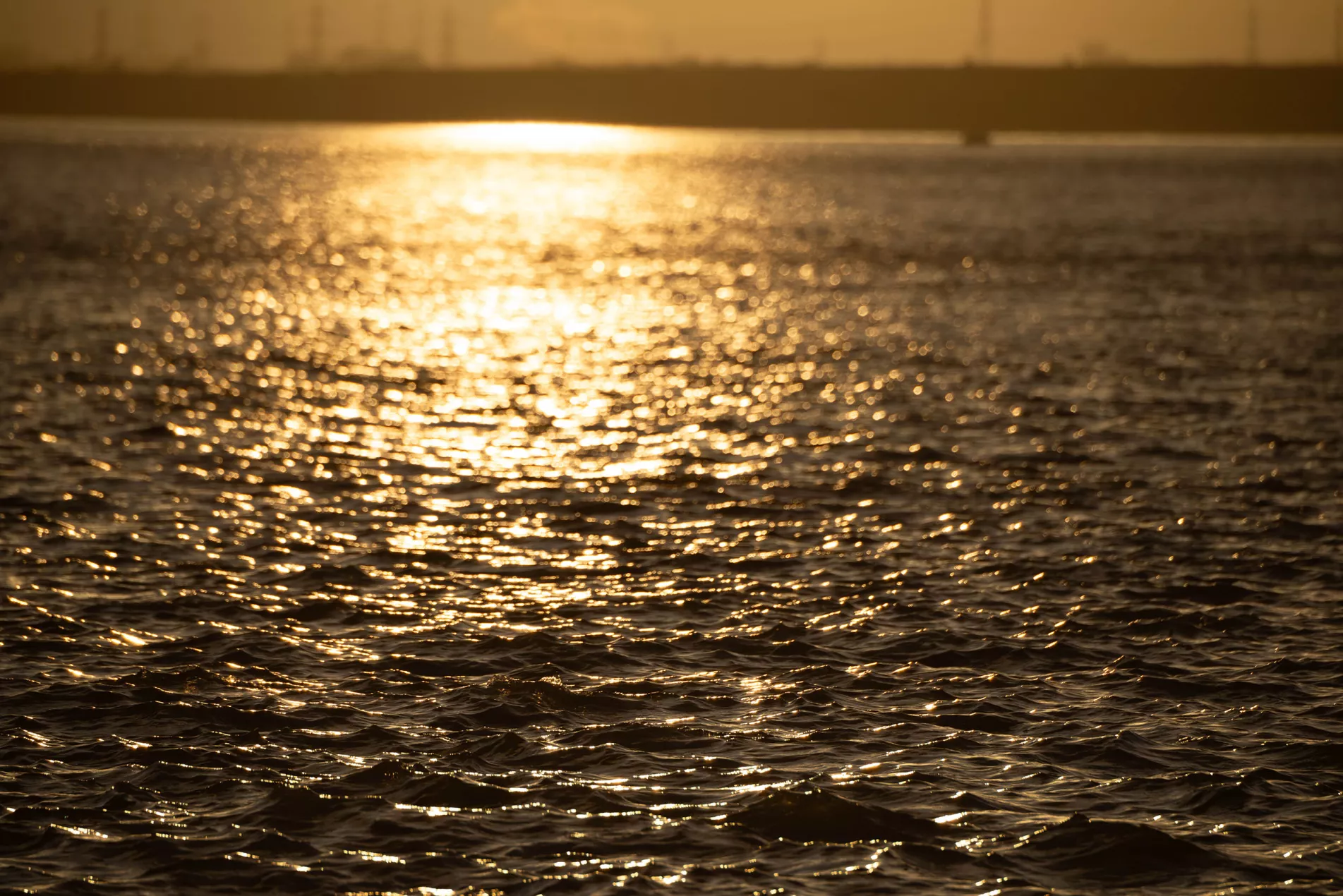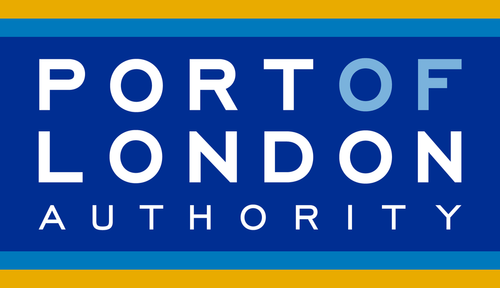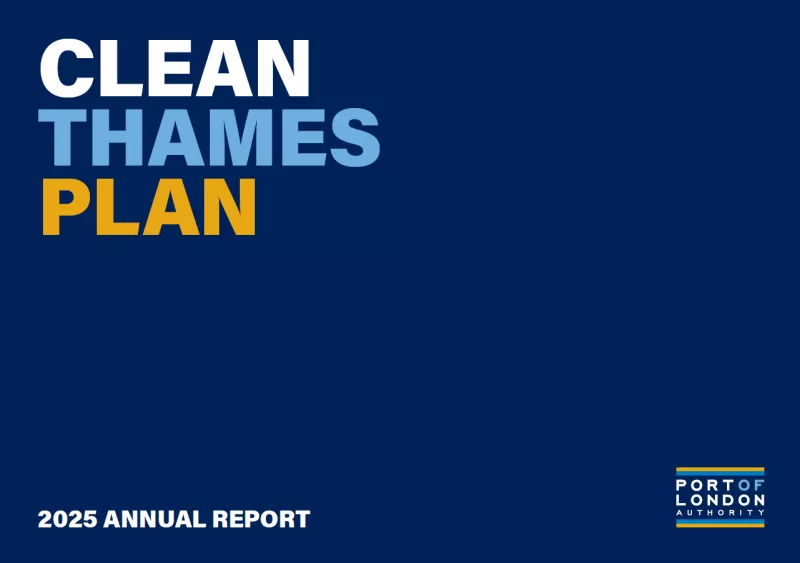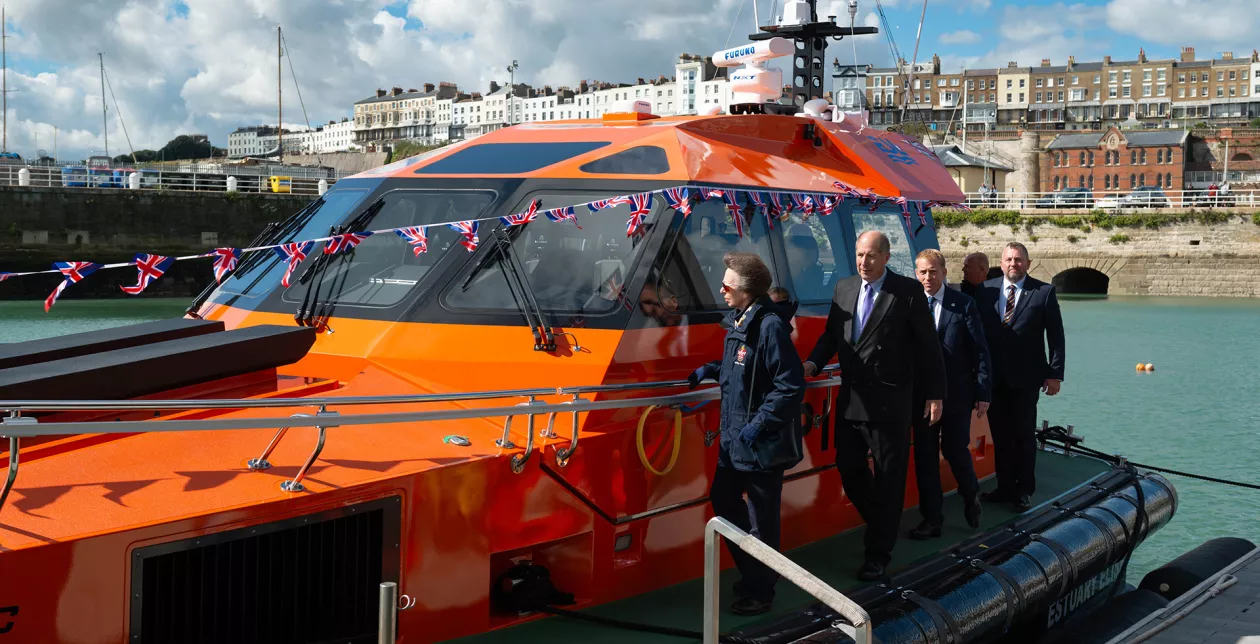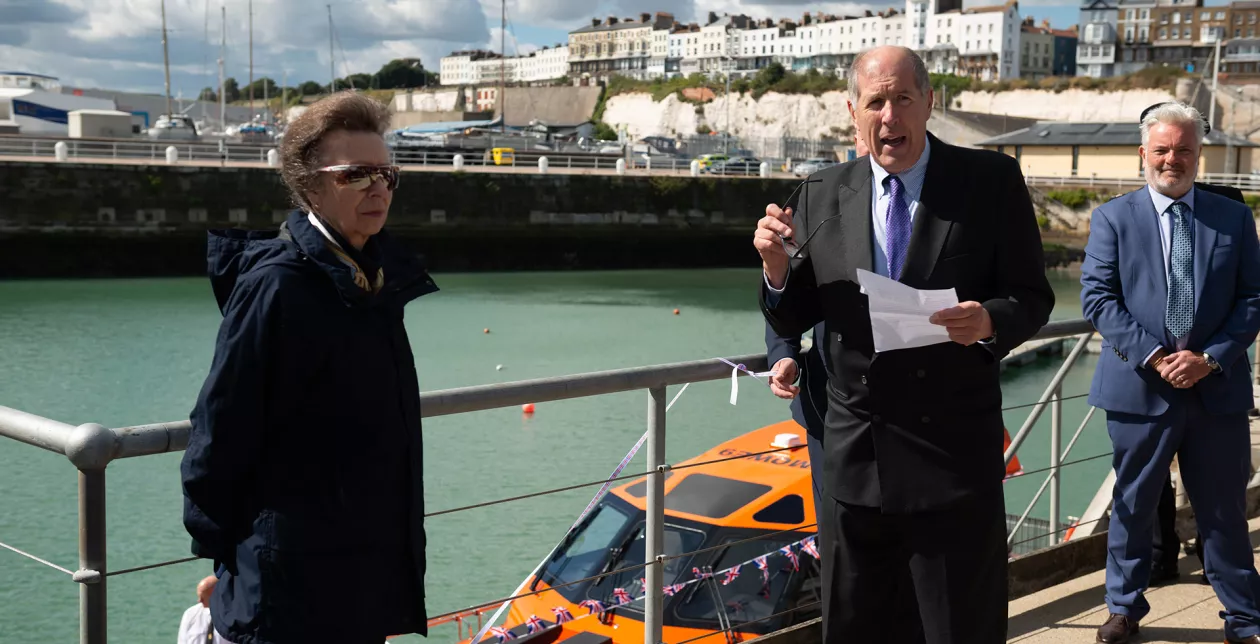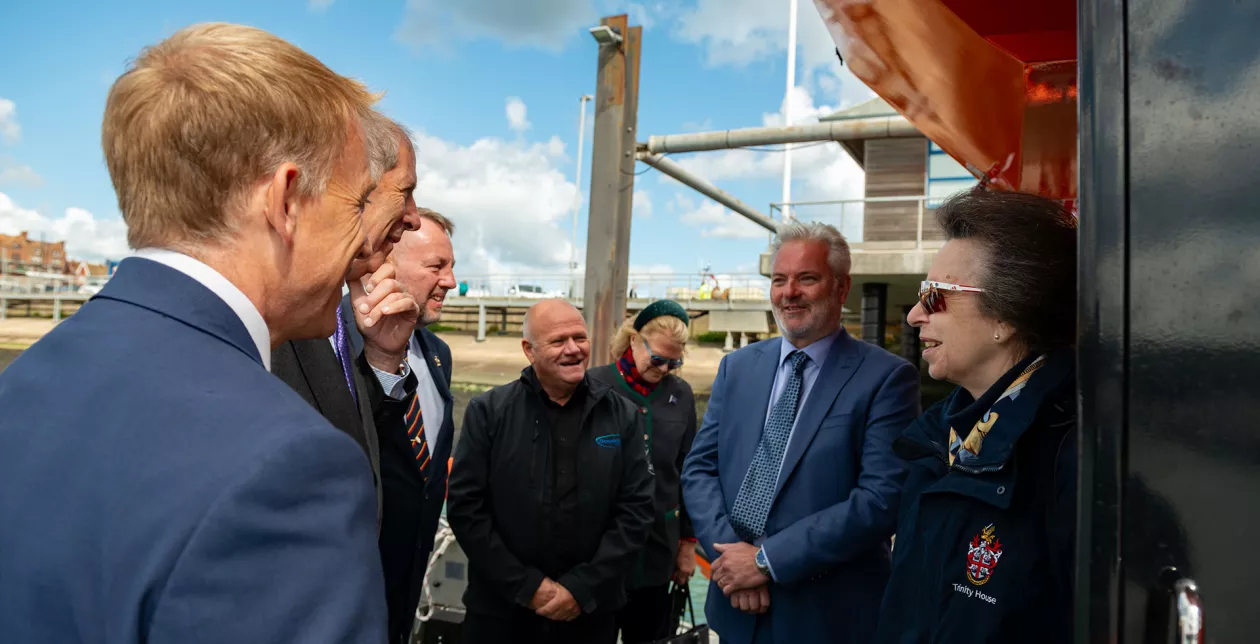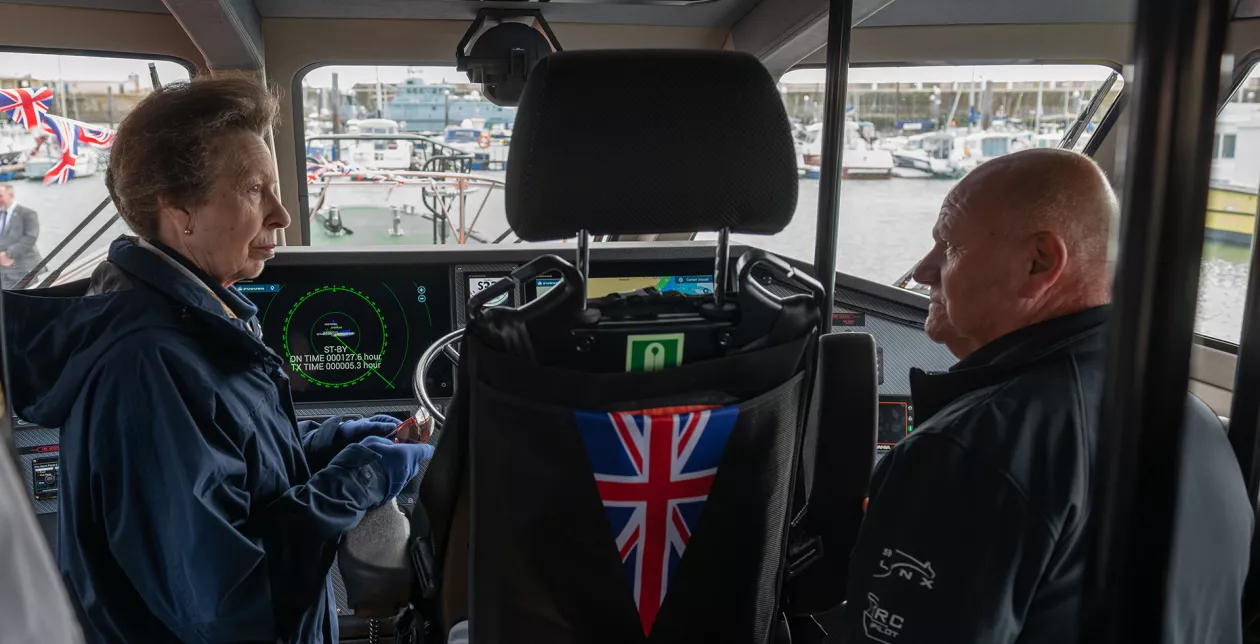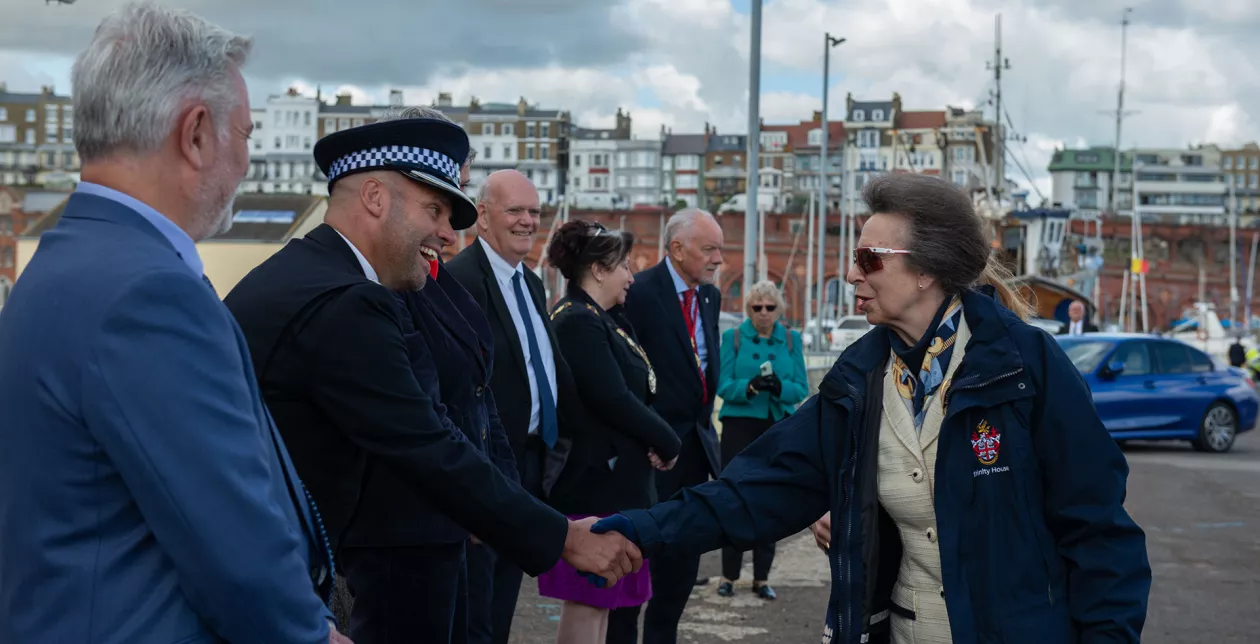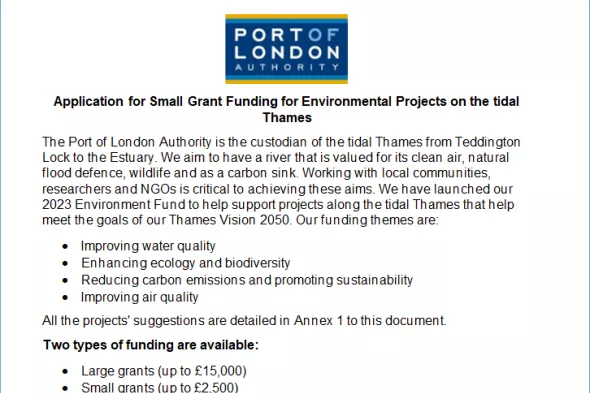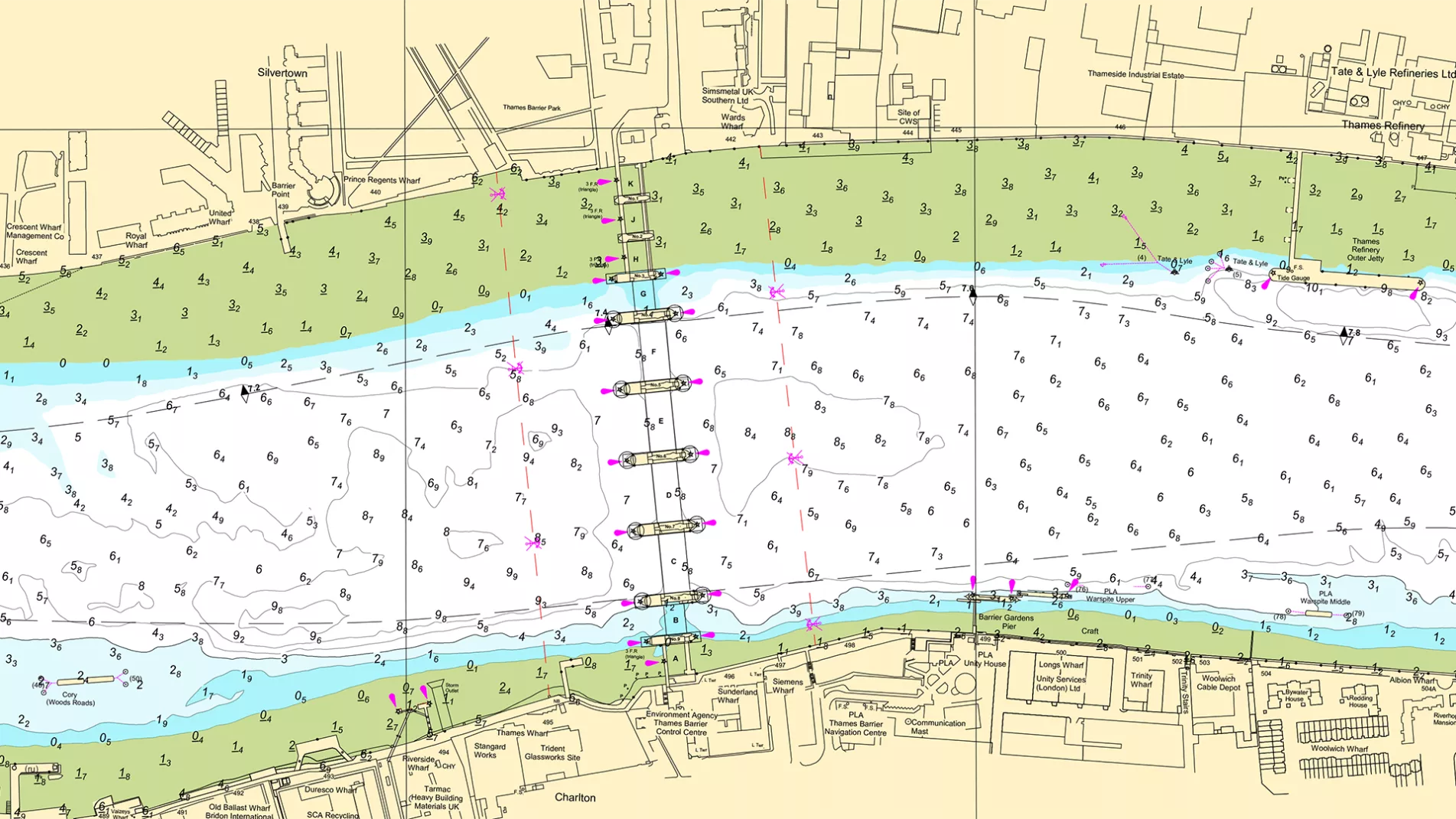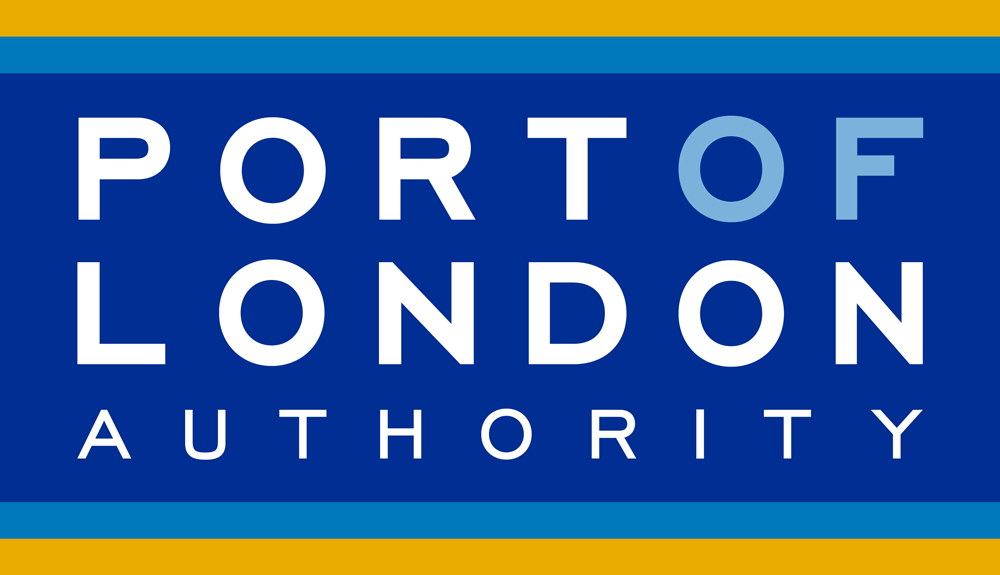Live Tides
NOTICES TO MARINERS
Charts & Surveys
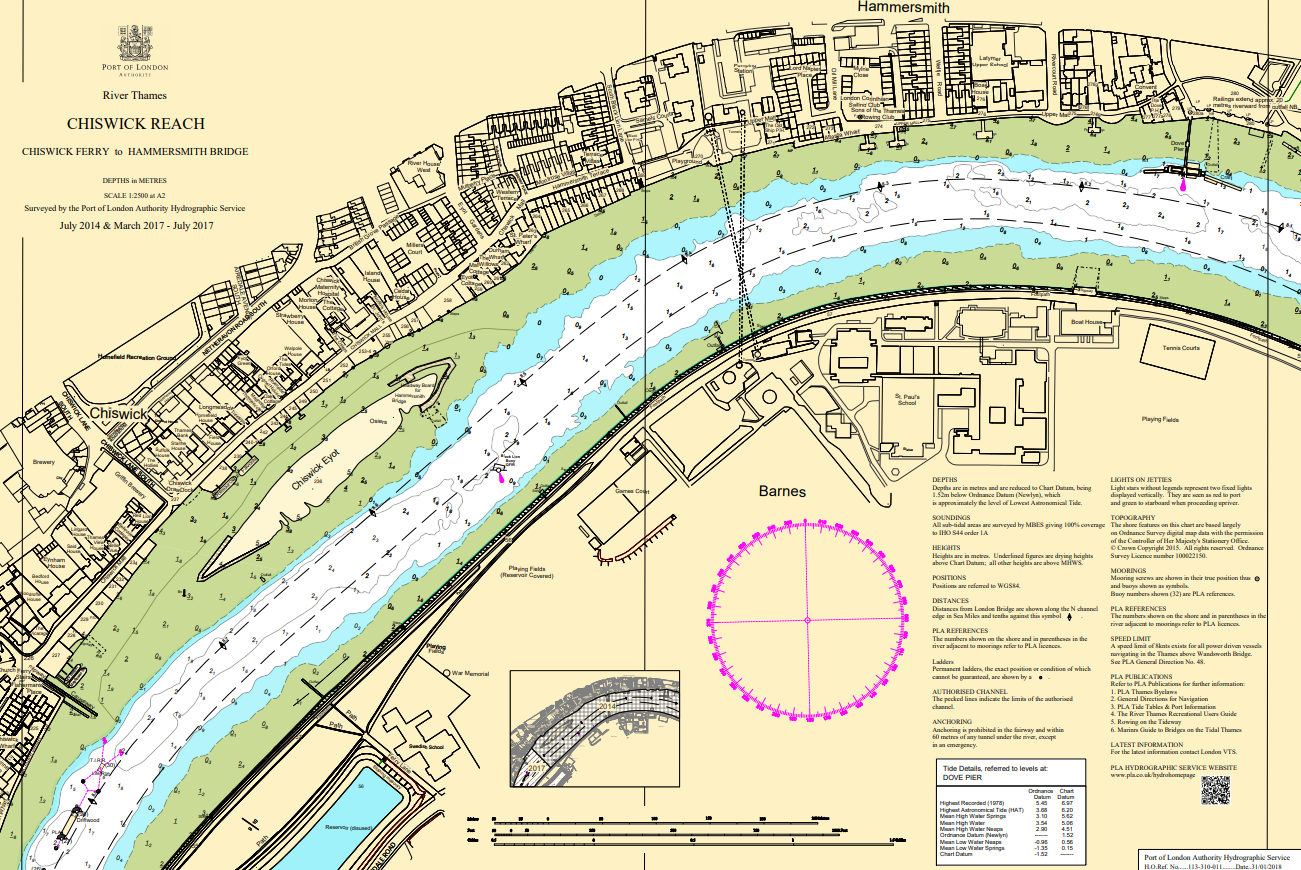
Incident reporting
Life-threatening emergencies on the river:
Call 999 and ask for the Coastguard
For near miss, safety observations and incident reporting click below
Middle Wharf expressions of interest
Responses due by 14 October 2024
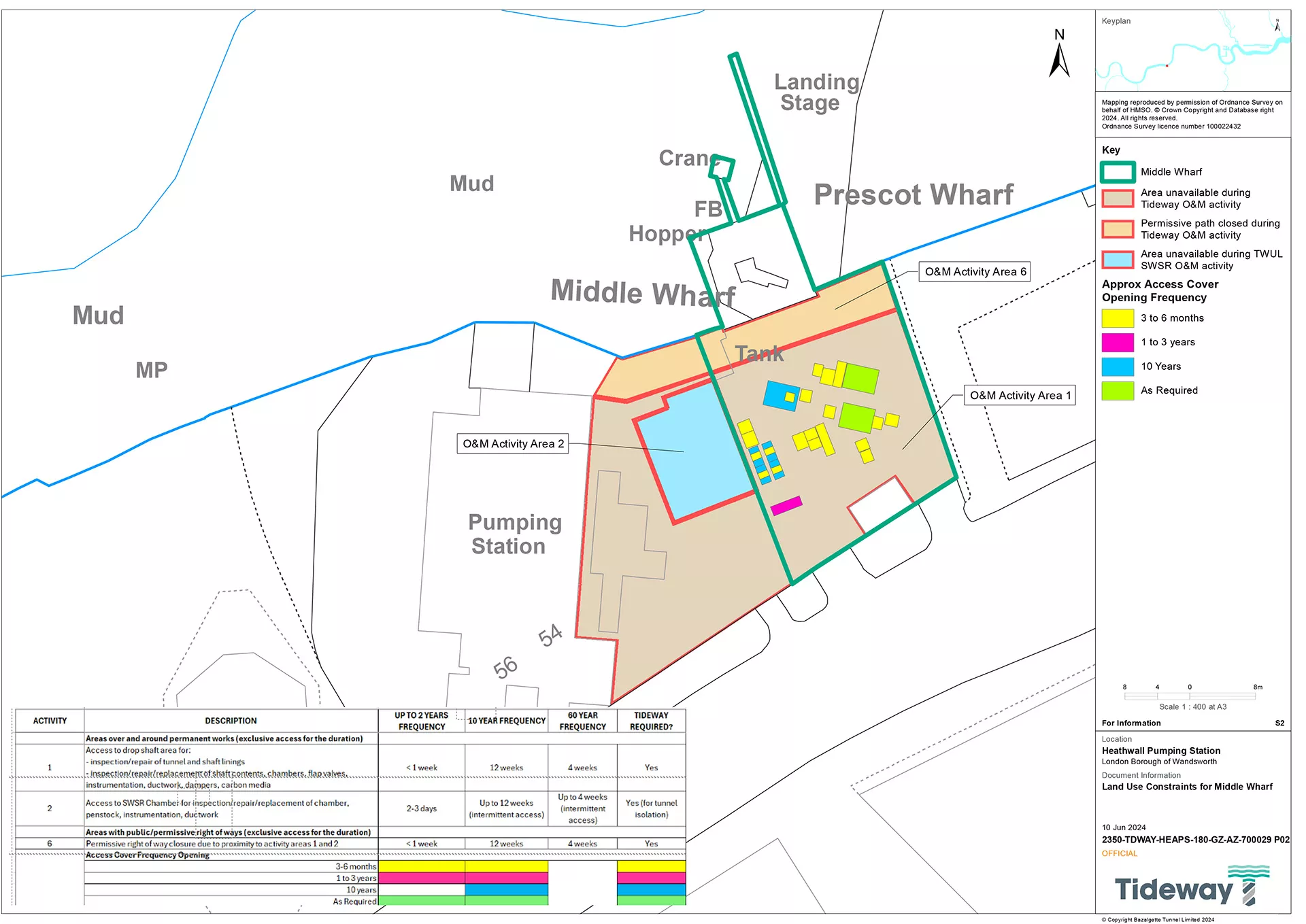
The Port of London Authority (PLA) is working with Thames Water (TWUL) to reactivate Middle Wharf following the completion of the Thames Tideway Tunnel scheme and we are seeking written expressions of interest from cargo-handling operators to work towards the wharf’s return to cargo-handling uses.
Middle Wharf is a Safeguarded Wharf in the London Borough of Wandsworth. It is owned by TWUL and has been used, together with the adjacent Heathwall Pumping Station site, to construct the Thames Tideway Tunnel Scheme. This work is ongoing and the wharf is not expected to be available for cargo-handling uses until mid-2025, by which time almost 55,000 tonnes of cargo will have be handled from the worksite of which it forms part.
Middle Wharf is one of the best placed wharves in the West London sub-region and it can contribute significantly to the modal shift of cargoes from road to water, consistent with London Plan policy. The PLA is working in partnership with TWUL to actively find the most appropriate approach to reactivating the wharf and want to develop proposals to reactivate the wharf with a suitable operator.
Middle Wharf extends to approximately 0.08 hectares and is located upstream of Vauxhall Bridge. The safeguarding direction and plan showing the extent of the wharf are attached. Access is from Nine Elms Lane. Navigational access to the wharf is indicated on the attached chart extract (from PLA Chart 315 – Nine Elms Reach) and tidal details are as follows: -
- Mean High Water Springs - +6.47 metres CD.
- Mean High Water - +5.87 metres CD.
- Mean High Water Neaps - +5.27 metres CD.
- Mean Low Water Neaps - +0.94 metres CD.
- Mean Low Water Springs - +0.32 metres CD.
The selected operator will be expected to work fully with the PLA and TW in pursuit of the wharf’s reactivation for waterborne cargo-handling in accordance with the policies in the London Plan and the future operational requirements of the Thames Tideway Tunnel.
Cargo-handling operations at the wharf will be subject to ongoing Tideway and TWUL maintenance requirements, as shown on the attached drawing, in terms of both area and frequency. The areas required to accommodate this activity must be made available by agreement with the operator when required in accordance with the planned maintenance schedule and operators may want to consider the location and permanency of any plant and equipment on this basis. Unplanned/emergency access may be required, and a protocol governing access in the event of an emergency will need to be agreed with TWUL. Any commercial agreement between TWUL and the operator for the wharf will reflect the need to access the site during these maintenance activities. A new Thames Path at the riverward end of the site was also part of the Tideway scheme, but the path will be closed during any cargo-handling operations from vessels to the wharf itself. Notwithstanding these constraints, the Mayor of London has confirmed, following a submission by Tideway, that the wharf continues to be viable for cargo-handling.
The PLA and TW are seeking details of cargo-handling operators’ initial technical and functional requirements and will look to explore with potential operators how these can best be accommodated at Middle Wharf to achieve a responsive, design approach which reduces as far as possible any harm to the surrounding area, including the amenity of surrounding uses and seeking to accommodate the Thames Tideway Tunnel operation and maintenance constraints. Accordingly, any outline proposals for new marine infrastructure, including jetties and dredging the operator expects to require at Middle Wharf should be submitted with any expression of interest.
The preferred operator will be selected on the basis of best compatibility with a range of selection criteria. Accordingly, submissions should focus on how the proposed operations at the wharf best comply with these selection criteria. In addition, the company’s recent financial and trading details should be provided, together with any further information the operator considers relevant to the consideration of their expression of interest.
Selection Criteria
Cargo-Handling Proposals
Details – or assumptions - of the operations proposed at the Wharf should be provided. Specifically, details on the type and nature of proposed operations, both on the Wharf and at the berth (or any proposed new marine infrastructure); vessels to be utilised (including likely dimensions and arrivals/departures from the berth); cargo sources and destinations from the Wharf, including those any added value processes proposed to be undertaken; total land area required for the proposed operations (if use of the whole site is not required); best estimate (if known) of cargo volumes to/from the Wharf, including splits between waterborne and road modes for materials to and from the Wharf; and details of any other infrastructure required to facilitate the proposed operations.
Planning permission for reactivation will need to be secured in due course. In promoting a planning application, the selected operator will need to be prepared to consider design flexibility when determining scale, layout and arrangement of elements. The PLA and TW would wish to explore and agree design guidelines and requirements for the Wharf, together with the selected operator and the Local Planning Authority so as to achieve an acceptable design approach to accommodate reactivation, having regard to the operational and maintenance constraints of the Thames Tideway Tunnel scheme, the surrounding area, land uses and other relevant planning considerations.
Financial Proposals
Details of the operator’s financial position and previous trading are – as noted above – required. Annual reports and other financial information are welcome and will be treated as confidential if requested.
Viability
Information – or assumptions underpinning the expression of interest – as to the current and future viability of the proposed operations at the Wharf should be provided. Specifically, details on target markets and products; opportunities to develop new waterborne trade at or in the vicinity of the wharf; the creation of synergies with existing cargo-handling operations within the Port of London.
Written submissions addressing all these issues should be made to me no later than 14 October 2024. Any questions should be directed to myself or to Lucy Owen, the Deputy Director of Planning and Development ([email protected]) in the first instance. Please note that the PLA and TWUL are under no obligation to accept any submitted response and retain the right to discontinue the procurement of an operator should the wharf be reactivated by other means or detailed feasibility assessments reveal that the use of the Wharf is not viable for use in the manner proposed by the selected operator.
The PLA hopes that this represents an interesting opportunity to operators within and new to the Port of London and we look forward to hearing from operators accordingly.
Related documents
Energy diversity in the tidal Thames
Mapping future options for alternative fuels on the Thames
HRH The Princess Royal today names Estuary Elise, latest British-built pilot boat to join Estuary Services Limited fleet
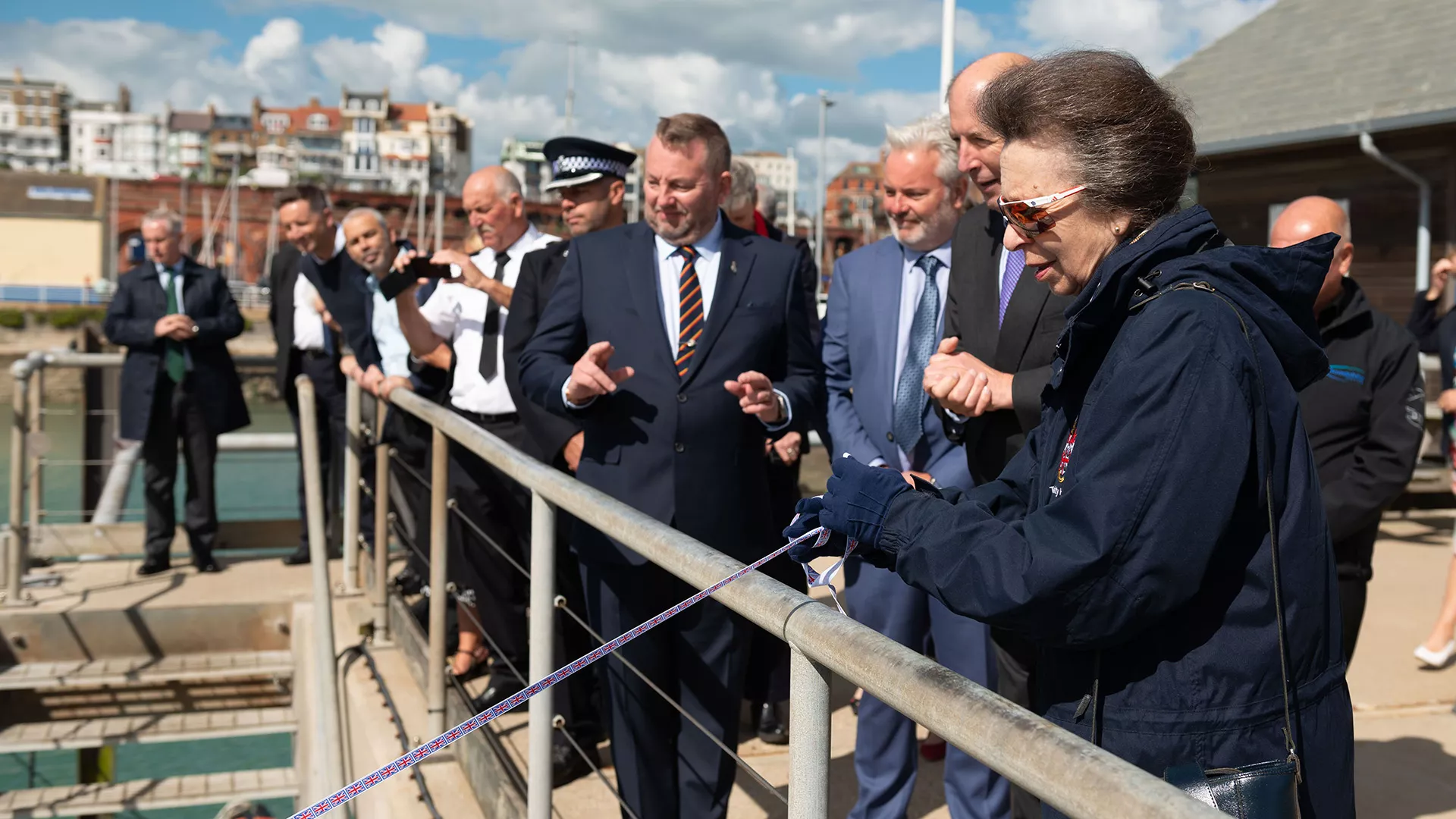
At a naming ceremony in Ramsgate today attended, HRH The Princess Royal officially named Estuary Elise, a state-of-the-art pilot boat to join Estuary Service Limited’s fleet of six vessels.
Estuary Elise is an ORC171 built by Norfolk-based family boat builders, Goodchild Marine Services Ltd. It uses a modern, fuel-efficient hull form, providing both greater service resilience and comfort, whilst supporting ESL’s customers. The vessel design also includes additional accommodation and extra capacity for customers.
Quote from ESL Managing Director, Robert Brown:
“We were delighted to welcome Her Royal Highness The Princess Royal to Ramsgate today to name our new pilot boat, Estuary Elise. This is the latest addition to supplement our fleet and will provide greater resilience, an even better service to our port customers, and – through improved fuel efficiency and reduced emissions - supports our ongoing commitment to improving our environmental performance.”
Quote from Goodchild Marine Services Limited General Manager, Stephen Pierce:
“Estuary Services Limited had the first ORC pilot boat built by us, and over the next twelve years those numbers have increased to over 30 in total for ports around the UK and Europe. This would not have been possible without the vision and commitment of ESL back then to be innovative in their approach to the next generation of pilot boats. It is with great pride that we see another ORC pilot boat enter service with ESL and our continued working relationship.”
Quote from PLA Chief Executive, Robin Mortimer:
“This British-built boat joins the ESL fleet as we approach one of the busiest times of year for the Port of London in the run-up to Christmas. Estuary Elise is designed specifically to meet the needs of the Port of London and ESL’s other customers, ensuring our pilots can reach our customers’ ships in the Thames Estuary and Medway in all weathers. Already the UK’s biggest port, we’re planning for a further 50% growth by 2050. This new cutter will both support our extensive pilot recruitment and training programme, and help us meet and exceed our 98% service commitment to our customers.
“The whole ESL team, our PLA pilots and colleagues from other ports, join me in thanking HRH The Princess Royal for naming the Estuary Elise today and for her ongoing support and commitment to the UK’s maritime sector.”
Related content
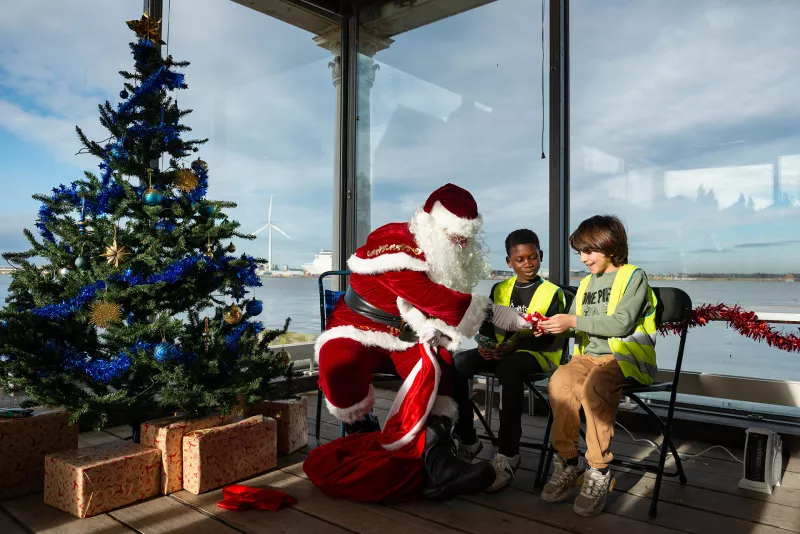
Location: London/Gravesend Remuneration: £28,971 per annum for a commitment of up to 24 days per...
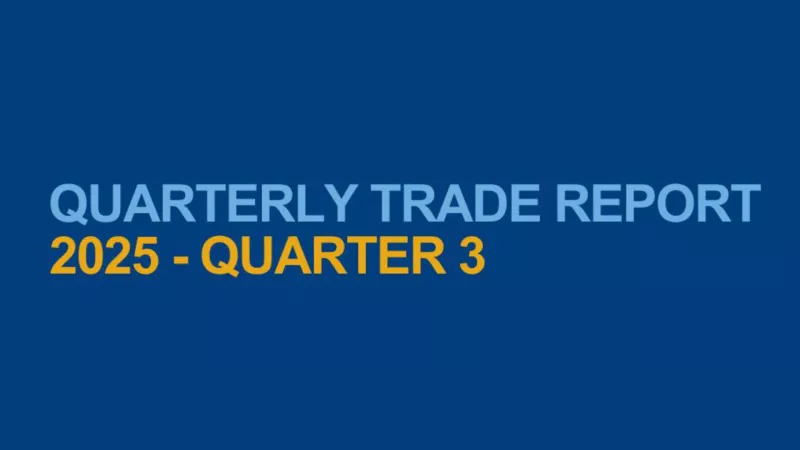
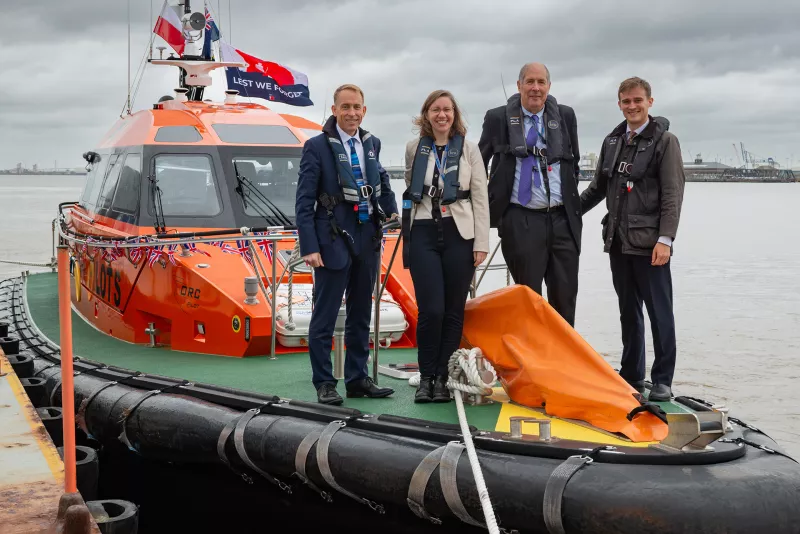
Air Quality Strategy 2024
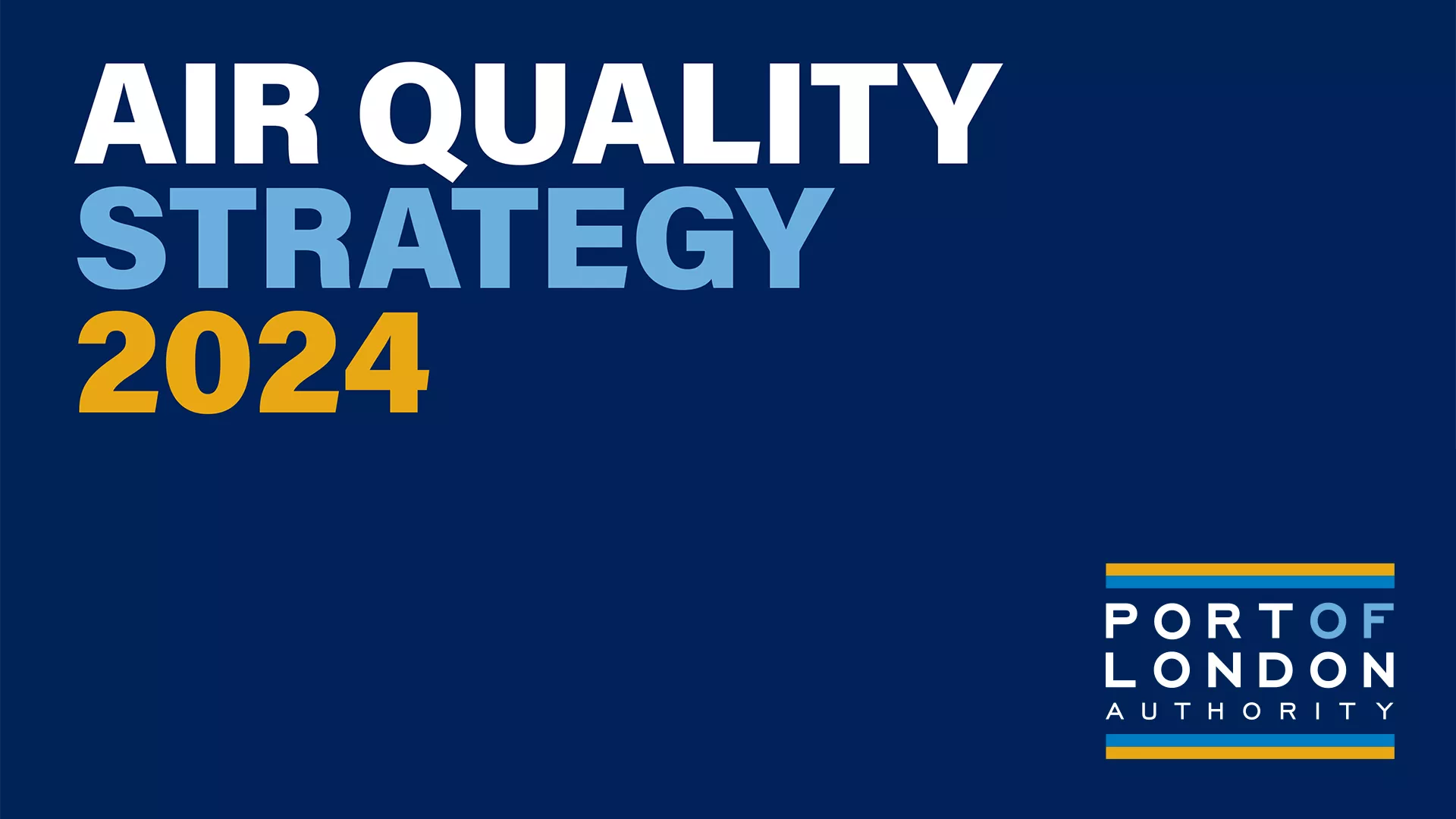
The Port of London Authority
Custodians of the Tidal Thames
The Port of London Authority is a trust port, responsible for the navigational safety of 95 miles of the tidal river Thames from Teddington to the North Sea.
We aim to keep commercial and leisure users of the river safe, promote river activities and protect and enhance the environment. As Britain’s biggest port and busiest inland waterway, the Thames is a popular yet historic landmark of London, and with the government’s recent commitments to achieving a Net Zero economy by 2050, this initiated the PLA’s Thames Vision 2050 plan which was launched in 2022.
The Thames Vision outlines the ports goals to become the UK’s largest Net Zero port and hub for tourism, trade and nature recovery by working closely with stakeholders from various sectors to achieve these objectives. We want to achieve these goals alongside making the river more accessible and inclusive, and to ensure the port’s resilience for the future. The PLA’s environment team is responsible for overseeing those actions associated with the ‘Natural Thames’ theme in the Vision.
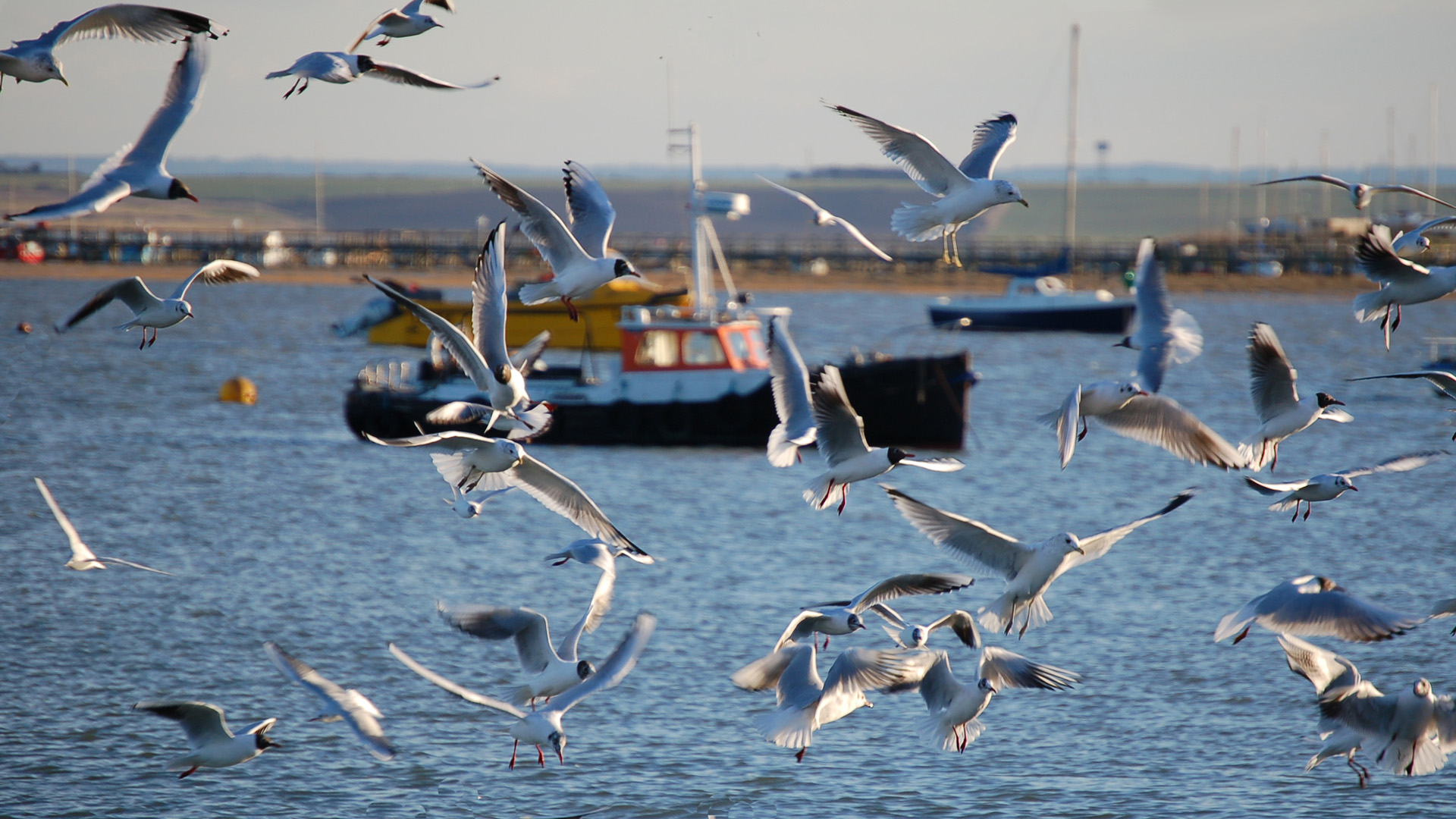
The goal of Natural Thames is to achieve a clean river, free of sewage, waste and other pollution, supporting greater biodiversity and recreational use. Valued for its clean air, natural flood defence, wildlife and as a carbon sink.
Acronyms
- AQS - Air Quality Strategy
- CO2 - Carbon Dioxide
- DEFRA - Department for Environment, Food and Rural Affairs
- DfT - Department for Transport
- EI - Emissions Inventory
- GHG - Greenhouse Gas Emissions
- GLA - Greater London Authority
- HVO - Hydrotreated Vegetable Oil
- IWV - Inland Waterway Vessels
- LAEI - London Atmospheric Emissions Inventory
- MEP - Maritime Emissions Platform
- NAEI - National Atmospheric Emissions Inventory
- NO2 - Nitrogen Dioxide
- OGV - Ocean Going Vessels
- PLA - Port of London Authority
- PM - Particulate Matter
- TfL - Transport for London
The Air Quality Strategy
"Valued for Clean Air"
Poor air quality is the largest environmental risk to public health in England and the cause of a growing number of premature deaths. According to the 2019 LAEI authored by the GLA, emissions from river-based sources in the UK (including commercial, passenger and private vessel activity) contribute less than 2% of annual nitrogen oxide emissions, but this figure is predicted to increase as river transport becomes more popular as a consequence of both tightening legislation on vehicles and port development.
The PLA was the first UK port to publish an Air Quality Strategy (AQS) in 2018. Being the largest UK port by volume situated in the highly populated south-east of England, taking actions reducing emissions from river-based sources is a priority.
The AQS outlined a five-year action plan with a total of 19 actions to be carried out with the objective of emission reduction across the PLA’s jurisdiction. In 2020, the strategy was updated to address new legislative changes and interim progress. In this update, 11 new actions were included and categorised by expected completion in the short, medium, or long term.
The 2024 strategy is to take a more strategic approach, putting the learnings we have taken from the past five years with the foresight of the future to instruct and facilitate river-wide action to improving air quality on the Thames.
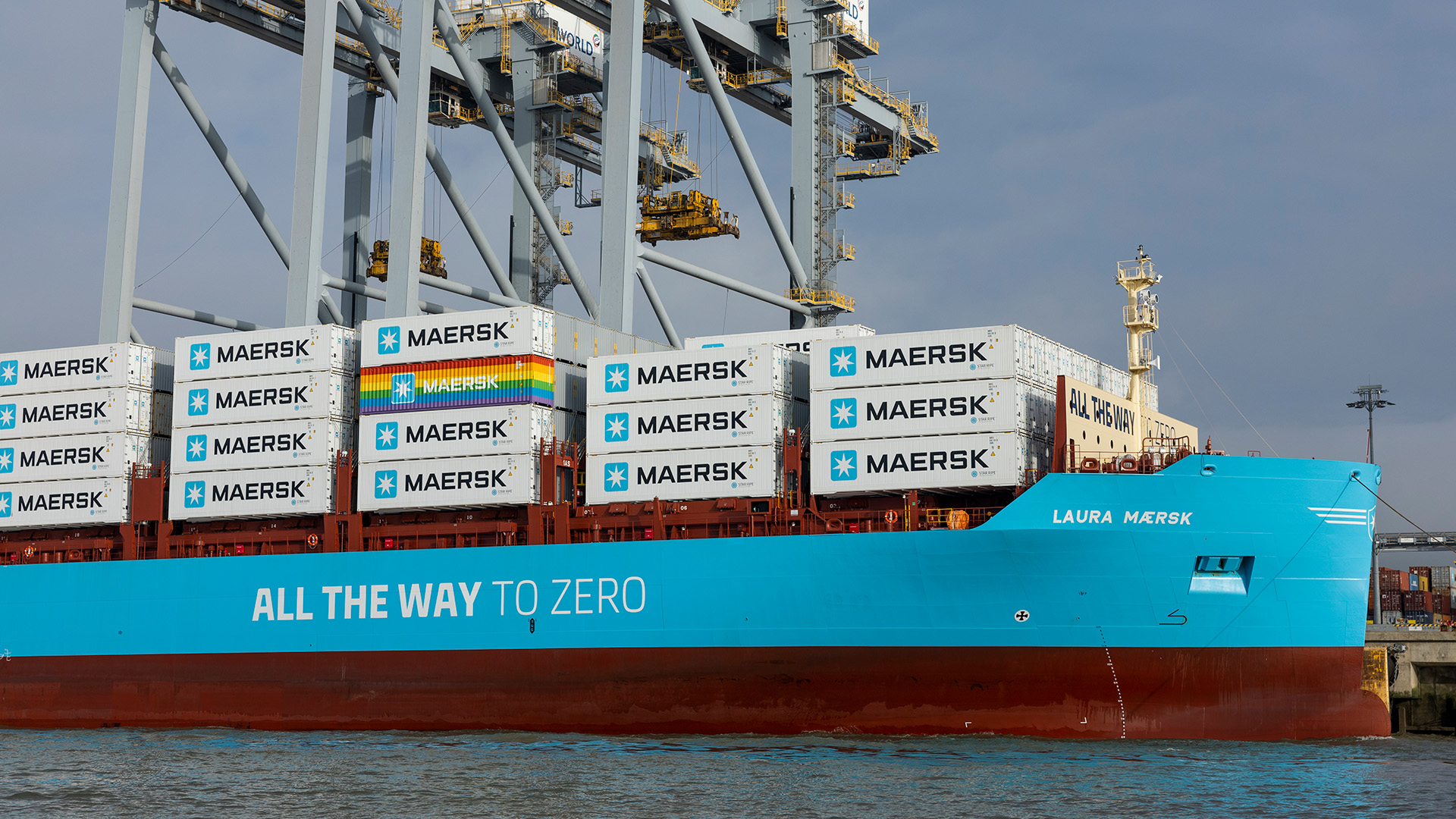
Progress on improving air quality in the Thames
Completed
- Alternative Fuels Trial
- Retrofit Trial
- Update Port Wide Inventory
- To carry out modelling of river emission dispersion
- Diffuse monitoring of river emissions
- Feasibility study for the use of LNG, CNG and other potential alternative fuels
- Shore-side power feasibility study
- Cost Benefit Investigation into Abatement
- Black Carbon Exposure Analysis
- NOX abatement project
- Host an environmental technology EXPO
- Publish best practice guidance for inland fleet operators
- Guidance for developers
- Review and improve the green tariff
Ongoing
- Appropriate standards for emissions
- Develop River Ultra Low Emission Zone
- Encourage freight service on the river
- Installation of green technology
- Develop a Demonstration Project
- Identify and secure funding and support for R&D
- Lessons learnt from trials in advancement of vessel technology
- Retro-fitting fleets
- Exhaust monitoring
- Ambient monitoring for marine emissions
- Ambient Monitoring at Greenwich Ship Tier
- PLA’s Fleet Review and Upgrade
- Net Zero PLA Commitments
Not Yet Started
- Port Call Optimisation
- Port Wide Inventory (NRMM)
- Investigate Energy Infrastructure
Not Pursued
- Diffuse monitoring of river emissions of O3
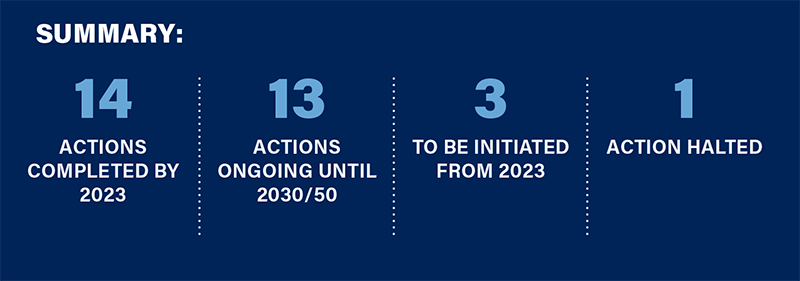
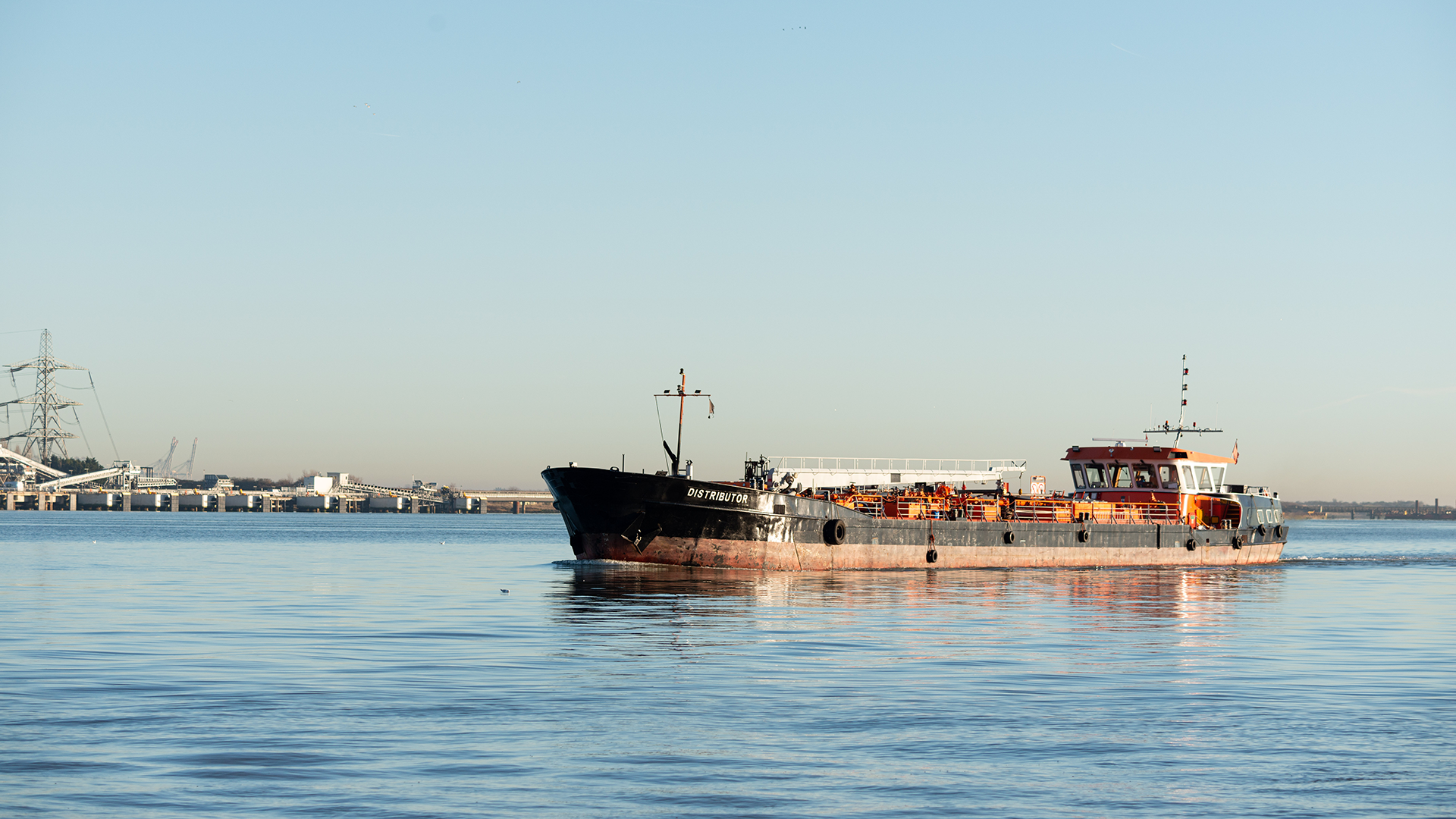
Action Highlights: Monitoring Our Impact
Monitoring of Emissions on the Thames
Real-time AQ mesh monitors have been in situ at various riverside locations since 2019. They monitor five key pollutants: NO2, PM2.5, PM10, Ozone (O3) and Sulphur Dioxide (SO2). This data is managed by Ricardo Energy and Environment Ltd who provide annual reports for each site. This data can then be compared to National Air Quality Objective Limits.
The PLA diffusion tube network has been established at river-side sites in various locations since 2018. Results of this monitoring, alongside the AQ mesh data, has revealed that most locations are under legislative limits for NO2, however, high concentrations at sites within the City of London and Westminster were recorded which correlates with the high ambient pollutant concentrations here according to the NAEI.
Monitoring of these pollutants has allowed us to build an evidence base for identifying those areas of concern and a baseline for these areas of the river.

Case Study
Greenwich Ship Tier Monitoring
The first 7 air quality monitoring sites were established around Greenwich Ship Tier, which was an action of the AQS. This was a focal area due to the public concern of the impact of cruise vessels mooring here. Since cruise vessels can safely navigate the Thames, they are welcome on the river and Greenwich Ship Tier is one of the few areas of the river they can safely moor.
A report was published in 2020 that reassured the public that cruise vessels did not have an impact on air quality as no correlation was observed between cruise vessel presence and spikes in air pollutant levels. Monitoring since this study has continued to evidence that levels of pollution around Greenwich Ship Tier are under national air quality limits. However it is still a focal area for air quality action.
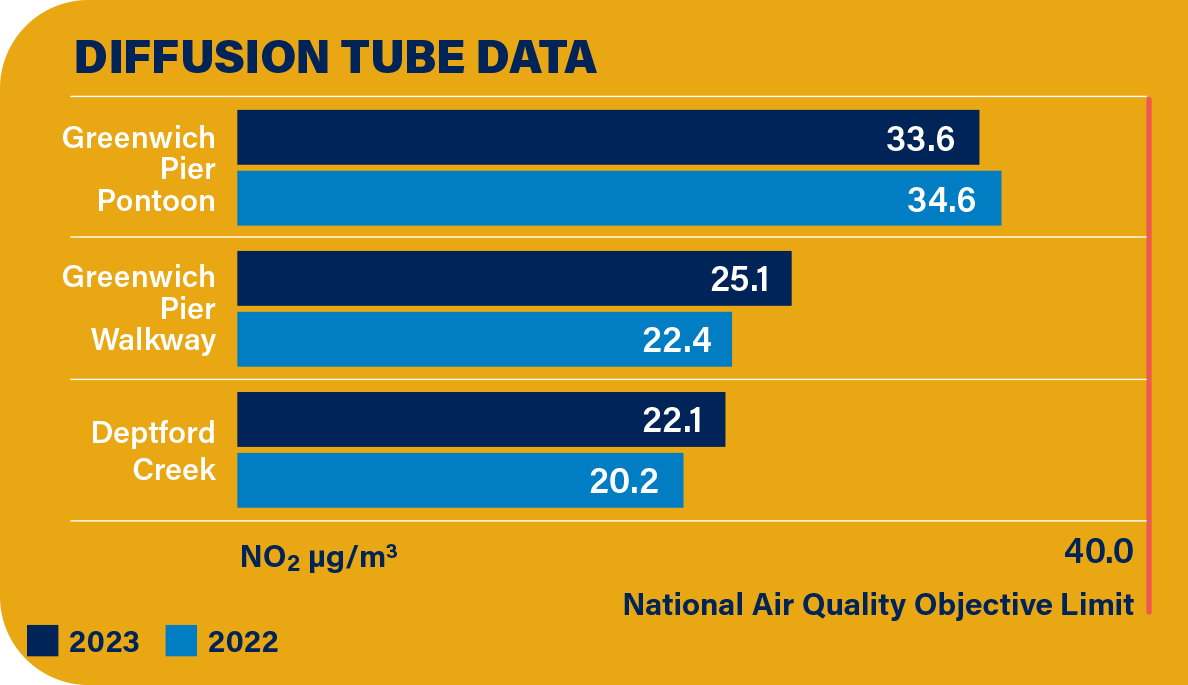
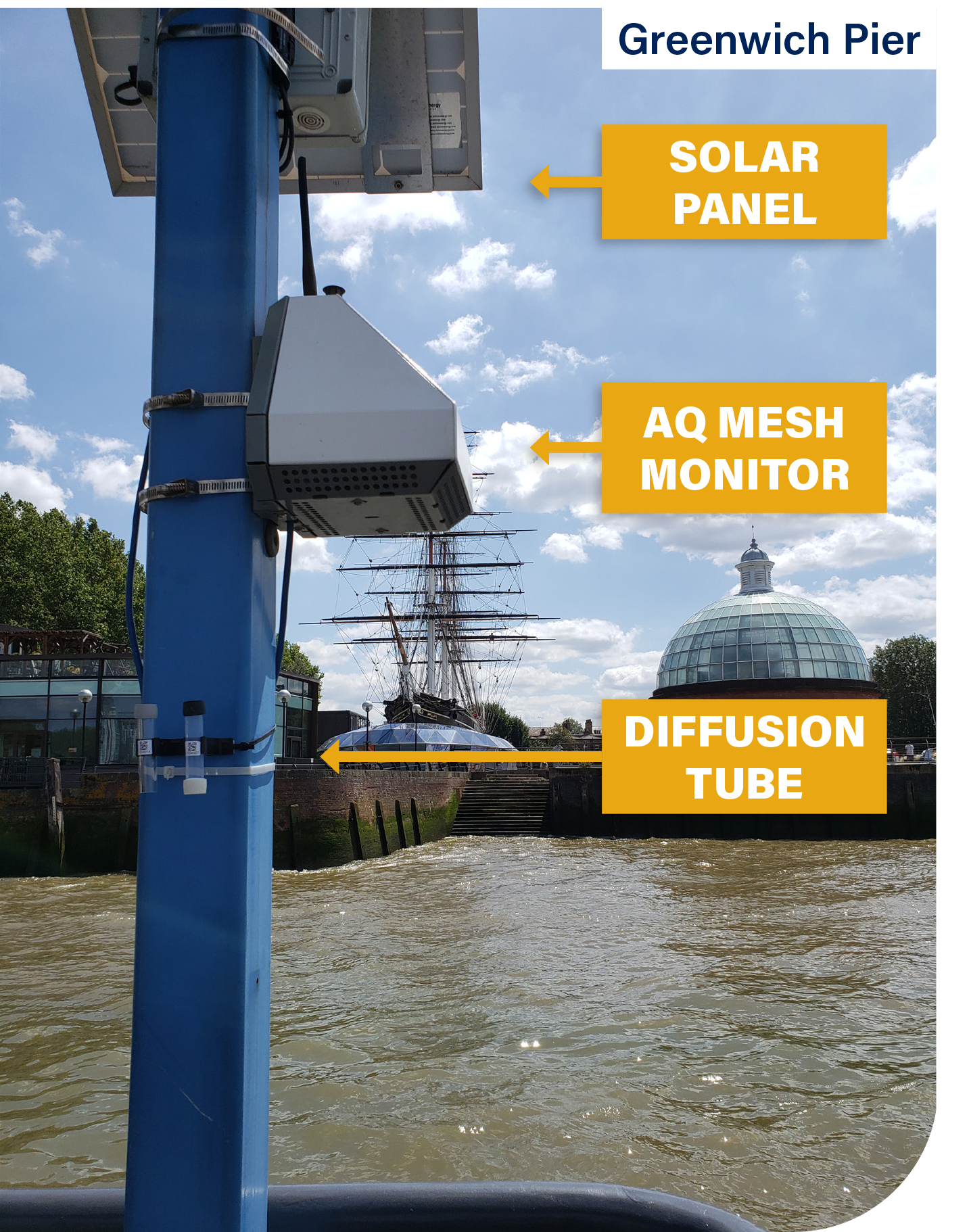
Action Highlights: Understanding Our Impact
Port Wide Emissions Inventory
In order to understand and explain our river-side monitoring results, it is necessary to observe what kind of river-based activity is occurring on the river and how this is contributing to pollution levels. Due to the diversity of river-users on the Thames, this needed to be explored to a granular level. With this level of detail, it is clear to see hotspots of vessel emissions on the river and even which vessel types are more polluting than others, which subsequently evidences which operators/vessel types/boroughs need to be the focus of future action to achieve river-wide emissions reductions.
At a high-level, inventory data is allowing us to understand our impact relative to other industry and is contributing to our Scope 3 emissions calculations. We also provide this data to the GLA to inform the shipping emission calculations in the annual London Atmospheric Emissions Inventory (LAEI).
“We wholeheartedly support this ambitious Air Quality Strategy and look forward to supporting the Port of London Authority with its delivery.”
Ruth Calderwood, Air Quality Manager at City of London
Case Study: 2021 Emission Inventory (EI) Findings
An EI is an accounting of emissions discharged into the atmosphere. The significant findings of the EI were that chemical/LNG/LPG, container, cruise, dry cargo, ro-ro/vehicle carriers, and tug and supply vessels sub types are the dominant contributors, making up 75% of energy consumption in the IWV inventory. For both IWV and OGV, auxiliary engines are the dominant emissions source as vessels spend most of their time in the port in stationary mode. Tug and supply vessels made up nearly half of the IWV emissions and energy consumption in the inventory despite this vessel type only being 18% of the unique IWV identified.
A heatmap of the results highlighted the fact that the highest emissions were arising from activity east of the Queen Elizabeth II Bridge (QEII), consistent with the large cargo-handling terminals situated there. Within the GLA boundary, areas around Tower Hamlets, Westminster and Greenwich were also highlighted as areas of high IWV activity.
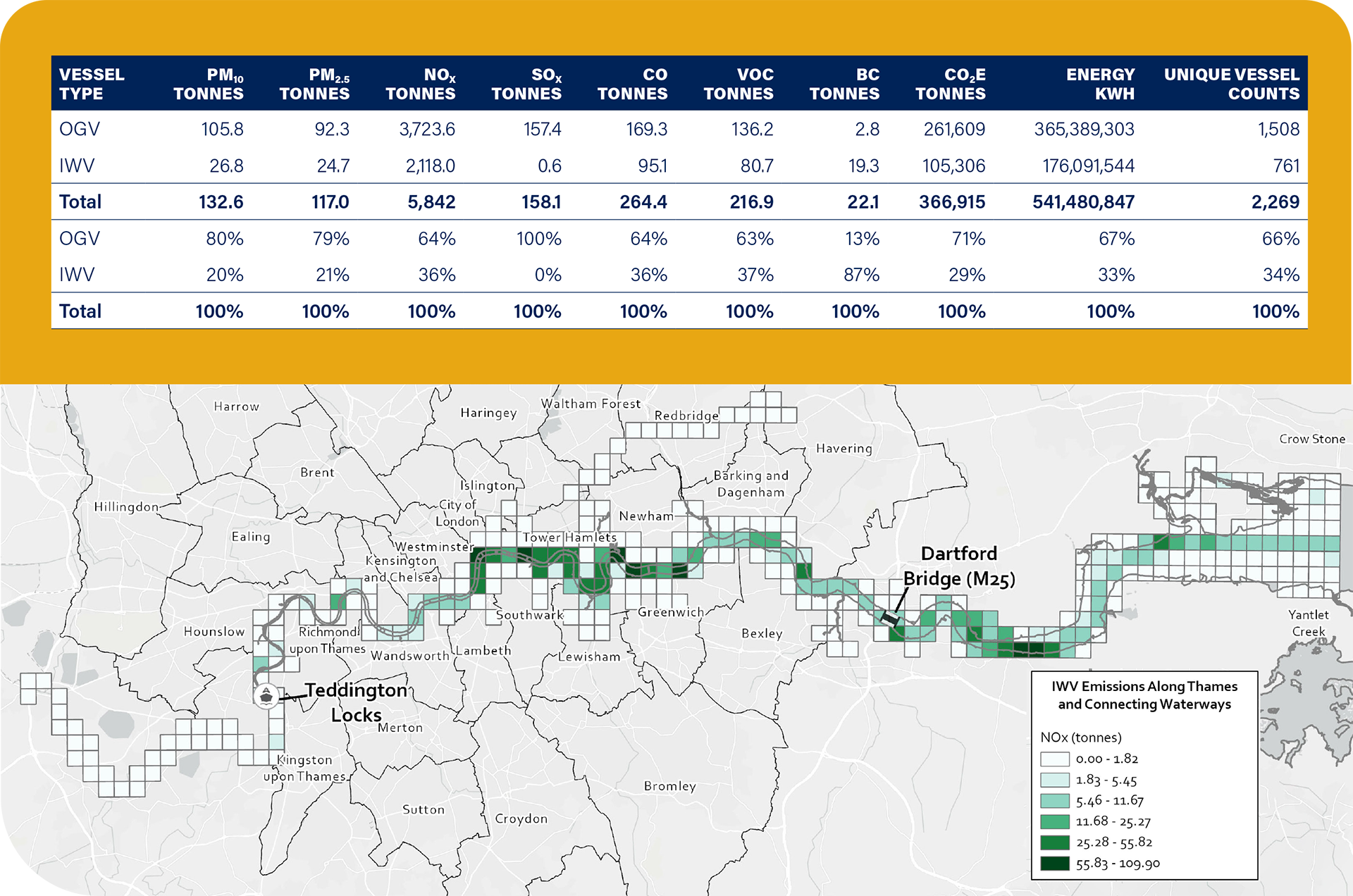
Action Highlights: Evidencing the Impacts
Trialling, Incentivisation and Innovation
As a regulatory body for the river Thames, the PLA feel that, as well as helping facilitate change, it is also important that we are forerunners in evidencing best practice in emission reduction technologies and behaviours. This is why feasibility study and knowledge sharing was such an important aspect of the previous strategies.
Internally, we wanted to take action to demonstrate the benefits of alternative fuels and technologies available to operators to reduce their emissions. We have trialled alternative fuels and selective catalytic reduction technology and shared these positive results publicly in hopes of encouraging other river operators to follow suit. Prominent operators on the Thames including Svitzer and Cory have made the transition to HVO after demonstrating no impact to engine performance or operation. These operators became part of the voluntary PLA run ‘Thames Green Scheme’ in 2021 and have since been receiving financial incentives for making this important transition. We hope to continue to influence the operators on the Thames to make innovative changes to their fleet in the interest of air quality. We also plan to work with government regulators to address the lack of incentivisation for biofuels to increase the uptake of this interim emission reduction measure.
Externally, we have been involved in projects that have given rise to the first electric workboat on the Thames and two projects revolving around hydrogen as a fuel of the future. Soon we will be operating an unmanned hydrogen powered survey vessel alongside the development of a hydrogen generation and storage facility, and we are currently in the development stage of our Hydrogen Highway feasibility project.
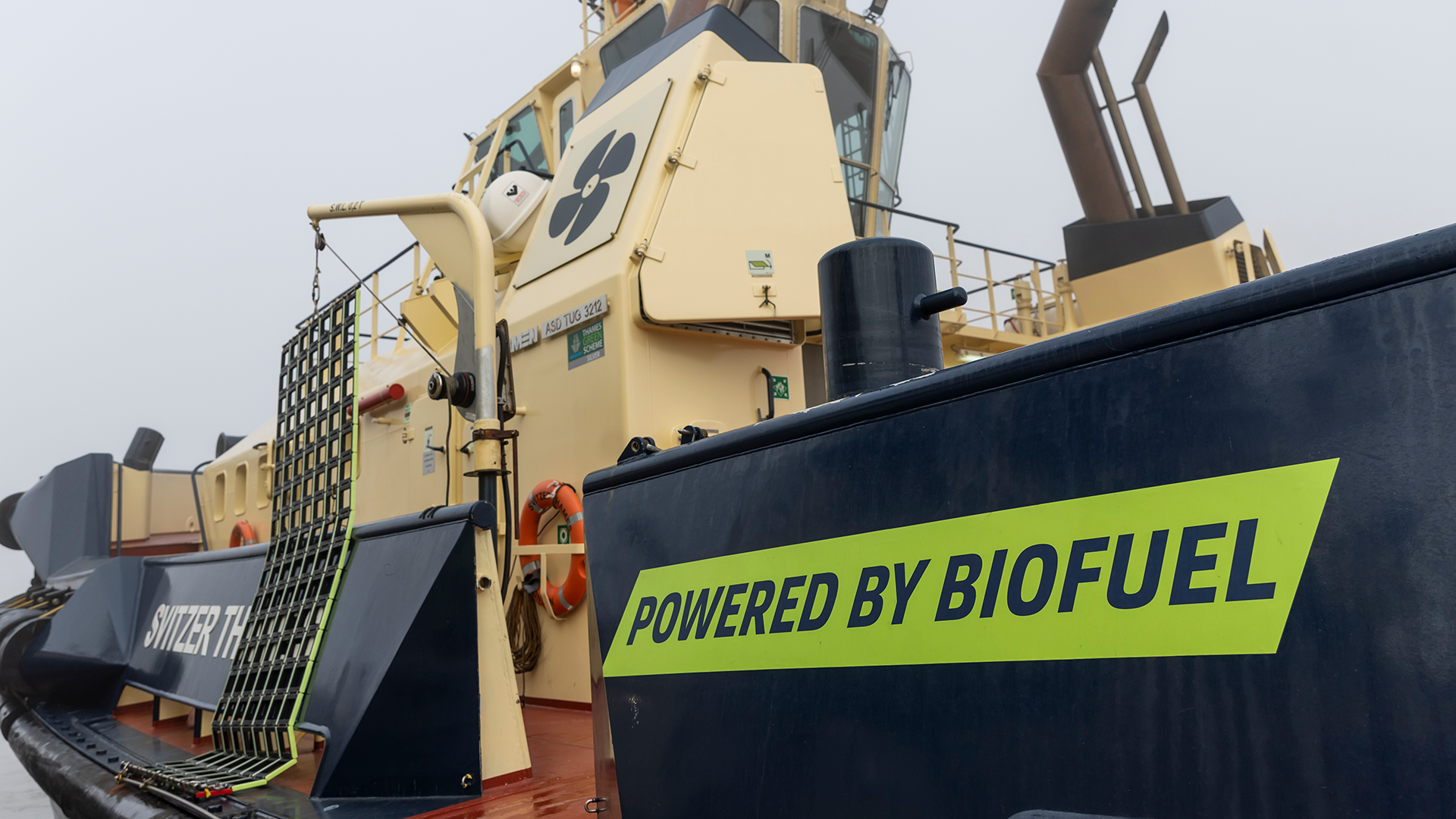
Case Study
PLA HVO Transition
As a result of alternative fuels testing and feasibility study completed in collaboration with University College London (UCL), the PLA trialled the use of alternative biofuel HVO on our own vessel fleet. It was observed that there was no adverse impact to engine performance but great benefits to emission reduction, particularly NOx and PM. This led to full fleet transition to HVO in 2022.
The HVO used in our vessels is second generation, so it comes from waste sources. This transition reduced the PLA’s vessel fleet GHG emissions by 55%, putting the PLA two years ahead of current internal interim targets for achieving net zero by 2040.
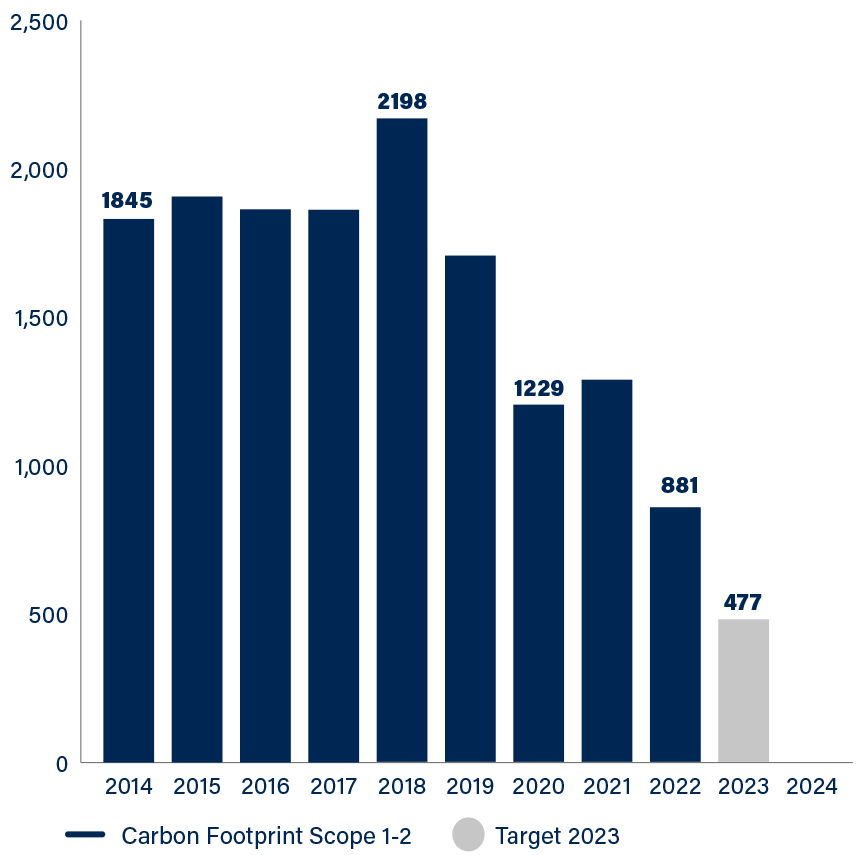
Where Is Action Needed?
- Consistently recorded high emission outputs from vessel activity at container port terminals around the City of London/Southwark.
- For inland vessels, tugboats were identified as a significant contributor to emissions in 2021. For ocean going vessels, Ro-Ro and vehicle carriers were the main contributor.
- There is increasing interest in reducing exposure to air pollution at national government and local level.
- With the evidence, we can target tugboat and Ro-Ro operators to understand their barriers to transitioning to alternative fuels. Some tug operators have already made a transition to HVO so this may act to incentivise others.
- Working on an international scale to uncover opportunities for green corridors for trade and international travel.
- Many stakeholders are engaged with the issue so the likelihood of support for air quality agendas is high.
- Market fluctuation in cost of alternative fuels and electricity.
- Lack of infrastructure in place for alternative propulsion methods and energy requirements in most parts of the world.
- Lack of government guidance, policy and incentivisation on alternative propulsion in the maritime industry.
- Unforeseen changes in government policy and/or targets.
Our Strategy for Tackling Air Pollution
The 2024 strategy update identifies five consistent and over-arching themes. These themes will allow continuity of the strategy over time and will allow our actions to be more targeted towards our ambitions. Some ongoing actions from our previous strategies have been consolidated within these themes.
1. Build on the evidence base on air quality
New actions:
- Track progress on shipping emissions through our Maritime Emissions Portal (MEP)
Consolidated carried over actions:
- Continue ambient emissions monitoring on the Thames
- Continue to evidence the air quality impacts of trialled technologies
- Consider the shoreside contribution to emissions on the Thames
2. Target hotspots and areas of concern
![]()
New actions:
- Work with tugboat operators to support their transition to alternative fuel
- Target vessel types or points of interest on the river where pollution needs to be improved
Consolidated carried over actions:
- Continue to evaluate the appropriateness of an ‘emission control area’ on the Thames
- Continue to consider appropriate standards for vessel emissions
3. Support the transition to low to zero emission fuels
![]()
New actions:
- Follow international trends on future fuels to marshal opportunities for green corridors
Consolidated carried over actions:
- Support and facilitate the installation of green technologies on the Thames
- Demonstrate the use of green technology on the Thames
- Investigate the availability and necessity for green technology
4. Advocate for better air quality on and around the river
![]()
New actions:
- Work with stakeholders to advocate for government guidance or legislation on the future fuels of the maritime industry
- Assist local authorities and other stakeholders in their efforts to improve air quality in riparian boroughs
Consolidated carried over actions:
- Encourage freight service on the river
5. Embed air quality considerations into our own decision making
![]()
New actions:
- Include air quality and sustainability considerations in the PLA Masterplan project
- Investigate the licensing of zero emission vessels
Consolidated carried over actions:
- Advocate for continuous improvement in port optimisation in the interest of improving the port's air quality impact
- Integrate air quality considerations into our Net Zero Strategy
The AQS Action Timeline
The AQS timeline is categorised into short, medium, long term and ongoing actions. Those actions identified for the short-term aim to be delivered by 2026, those identified for the medium-term aim to be delivered or in progress by 2030, and those for the long-term are objectives for up to 2050.
Several actions in the AQS are complimentary to those outlined in the Net Zero River Plan (NZRP) published by PLA in 2024. The NZRP is a 3-year action plan to tackle decarbonisation on the river that was developed through the work of the Net Zero Coalition.
- Continue to evaluate the appropriateness of an ‘emission control area’ on the Thames
- Continue to consider appropriate standards for vessel emissions
- Follow international trends on future fuels to marshal opportunities for green corridors
- Include air quality and sustainability considerations in the PLA Masterplan project
- Investigate the licensing of zero emission vessels
- Integrate air quality considerations into our Net Zero Strategy
- Continue to evidence the air quality impacts of trialled technologies
- Work with tugboat operators to support their transition to alternative fuel
- Support and facilitate the installation of green technologies on the Thames, including shore power and alternative fuels
- Investigate the availability and necessity for green technology, including shore power and alternative fuels
- Work with stakeholders to advocate for government guidance or legislation on the future fuels of the maritime industry
- Advocate for continuous improvement in port optimisation in the interest of improving the ports air quality impact
- Track progress on shipping emissions through our Maritime Emissions Portal (MEP)
- Continue ambient emissions monitoring on the Thames
- Consider the shoreside contribution to emissions on the Thames
- Target vessel types or points of interest on the river where pollution needs to be improved
- Demonstrate the use of green technology on the Thames
- Assist local authorities and other stakeholders in their efforts to improve air quality in riparian boroughs
- Encourage freight service on the river
Future Ambitions for Our Targets
The PLA is committed to leading the way on emission reduction action in the UK maritime industry and determined to work closely with operators to overcome challenges to fleet transitions.
Since the first AQS was published in 2018, global market fluctuations owing to Covid-19 and political turmoil have impacted the maritime industry on a global scale. Vessel activity has returned to pre-Covid levels and we have access to more robust and up to date data sources that have put us in a stronger position to calculate emissions. As a result of this, the PLA will be re-baselining its emissions for 2023.
Re-baselining our emissions will have an impact on our targets previously published in the 2020 AQS, so we plan to refresh our emissions targets for the next iteration of the strategy in 2026. These targets we have stated are intentionally ambitious and reflective of the emission reduction goals set out by the Clean Air Strategy (by DEFRA) and the Clean Maritime Plan (by DfT) both published in 2019.
DEFRA introduced new legislative targets on PM2.5 emissions in 2023. These targets aim to achieve a population exposure reduction of 35% across England by 2040 compared to a 2018 baseline. This will be considered, along with our targets in a 2026 strategy progress document.
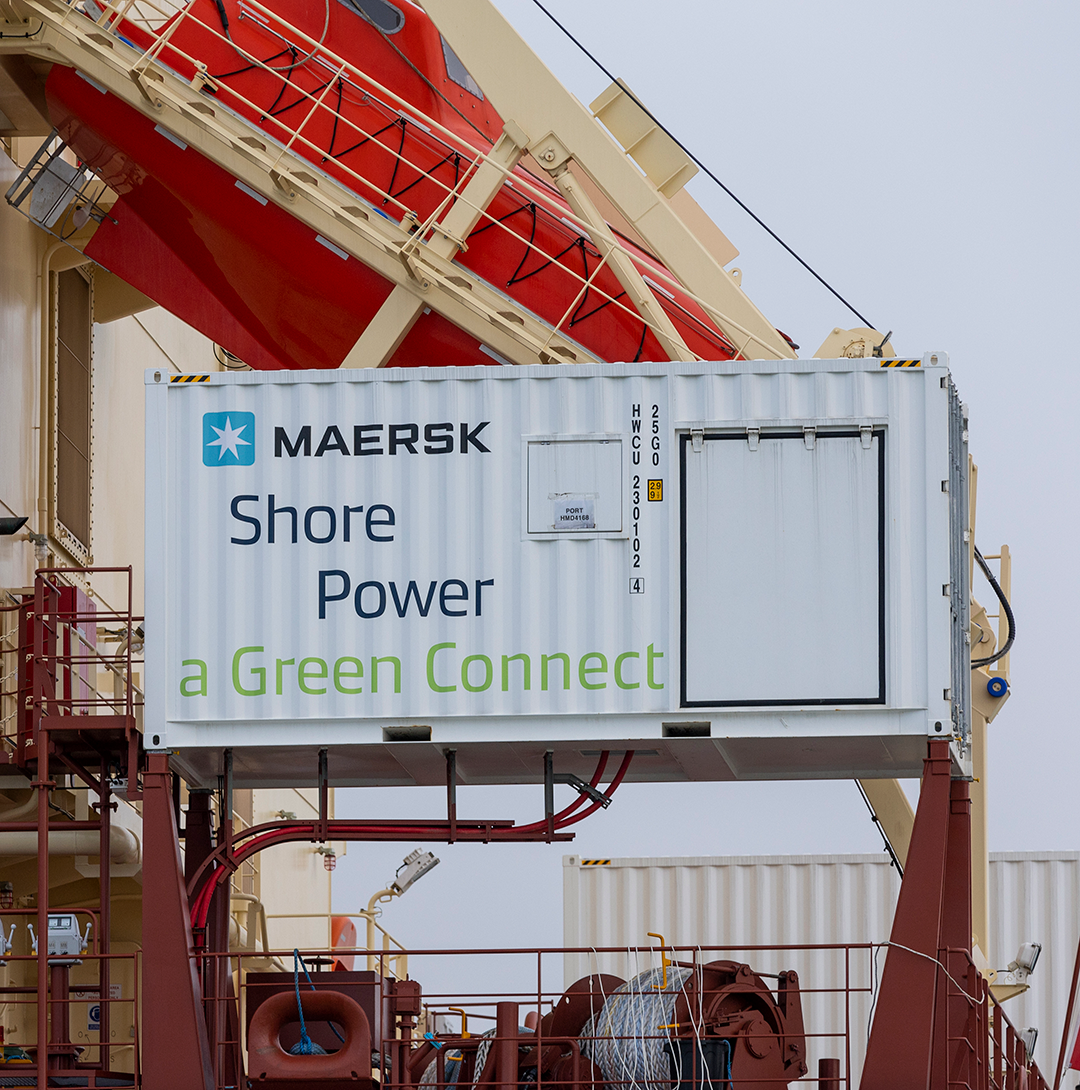
Updates to the General Directions for Navigation in the Port of London
Consultation C02-24 / Closed Friday 13th September 2024
CONSULTATION STATEMENT: C02-24
This consultation ran from 08/08/2024 to 13/09/2024. The below statement has been provided to summarise the Port of London Authority’s response.
Following a thorough consultation on the proposed changes to the General Directions for Navigation in the Port of London, feedback was received from various stakeholders, with general agreement but several key concerns raised. Below is a summary of the main points and the Port Authority’s responses:
Qualifications for Thames Masters
Concerns were raised about the complexity of qualifications required for a Master on the Thames, including the need for an MCA Boatmaster Licence (BML) for Category C & D waters, a local endorsement, and the addition of Continuing Professional Development (CPD) points. It was felt that these requirements, compared to other UK inland waterways, create an increased burden, involving multiple regulatory bodies and higher costs.
PLA Response: The Local Knowledge Endorsement (LKE) is a Maritime and Coastguard Agency (MCA) requirement that applies in many UK ports. The CPD requirement was developed through consultation with local operators. No changes are proposed to the mandatory CPD requirement, as this is already in force; however, clarity on enrolment dates and changes to allocated points will be provide on the Thames CPD website.
Inconsistency in Terminology
Some stakeholders pointed out inconsistencies in the use of abbreviations like "hrs" versus "hours" and measurements such as "metres" and "m," calling for standardisation throughout the document.
PLA Response: Agreed to standardise these terms for consistency.
Bunkering and Fuel Definitions
Several respondents recommended clarification of the term "bunker" to refer specifically to its contents (cargo). They also suggested expanding the list of bunker cargo types to include liquefied hydrocarbon gases and other products, such as sewage, which are transported on the Thames.
PLA Response: The term "bunkers" is a standard ISO term, also used by the Royal Navy. These suggestions have been noted, but the definitions will remain unchanged. Expanding the list of cargo types will be considered in future revisions.
Spelling and Grammar
Stakeholders identified spelling issues, including the need to align with international standards such as using "organization" as per the International Maritime Organization’s official spelling. Typographical errors in the draft were also noted.
PLA Response: Agreed to make the necessary corrections, including aligning the spelling and fixing typographical errors.
Clarification of Vessel Definitions
Suggestions were made to include drones (UAVs) under the definition of "aircraft" and to expand the definition of "tug" to cover vessels towing a barge.
PLA Response: UAVs have a separate definition and will not be included under "aircraft." The suggestion to expand the "tug" definition will be reviewed as it may cause issues elsewhere.
Speed Reduction and Wake/Wash Guidance
A respondent suggested more detailed guidance regarding speed reductions in areas with wake and wash restrictions. The concern was that the impact of wash varies depending on the section of the Thames and may need different enforcement measures in different locations.
PLA Response: The existing guidance in Byelaw 57 is considered sufficient. The General Directions include reasons for speed reductions beyond just wash. No further changes are proposed.
Bunkering and Safety Measures
A recommendation was made to strengthen safety protocols for bunker vessels by ensuring the Harbourmaster checks compliance, such as oil cargo endorsements and spill kit provisions.
PLA Response: The Harbourmaster already checks vessel compliance as per established procedures. These specific requirements are regulated under other guidelines and do not need to be listed in the General Directions.
Typographical and Structural Adjustments
Minor corrections were suggested, including sentence restructuring, formatting issues, and ensuring consistent use of capital letters for defined terms.
PLA Response: Agreed to make these corrections and adjustments to improve clarity and consistency across the document.
Vessel Navigation in Restricted Visibility
An inconsistency between sections 14.3 and 24.3 was noted regarding vessel movements in restricted visibility. It was suggested that the rules be aligned across the Thames for clarity.
PLA Response: This issue will be reviewed further to ensure consistency. No immediate changes will be made until this is reassessed.
Miscellaneous Feedback
Additional feedback included requests for improvements to definitions, such as for "pleasure vessels" and "high-speed craft," and some suggestions to restructure certain clauses for better clarity.
There was also feedback on a range of other General Directions where no changes have been proposed as part of this consultation.
PLA Response: Some of these suggestions have been accepted, such as adjustments to definitions. Other, more significant, changes will be considered for future revisions as needed, as the suggested changes have not been subject to consultation.
In conclusion, the consultation highlighted broad support for the proposed changes, but several areas will be refined to improve clarity, safety, and operational efficiency on the Thames. Feedback will continue to be reviewed, with some issues considered for future updates to the General Directions.
Cathryn Spain
Senior Harbour Master
THIS STATEMENT IS ALSO AVAILABLE AS A PDF.
1. Introduction
1.1. This public consultation is to seek views on proposals for several modifications to the General Directions for Navigation in the Port of London (General Directions).
1.2. The consultation applies to all areas within the jurisdiction of the Port of London Authority and to a variety of river users navigating and operating on the Thames.
1.3. We would like feedback on the proposed changes, including any concerns regarding potential impact on safety or on operations, which may make the changes difficult to implement. We would also welcome any comments in support of the proposed changes.
2. The Consultation Process
Affected Parties
2.1. This consultation is directed towards river users and will be of particular interest to those who are involved in any commercial activities.
Consultation Duration
2.2. This consultation is now open and will last for 36 days. It will close on Friday 13th September 2024.
Conclusion
2.3. The information you submit may be made available to other parties. If you do not consent to this, you must clearly request that your response be treated as confidential. Any confidentiality disclaimer generated by your IT system in e-mail responses will not be treated as such a request. If you make such a request, you will not receive a personal response.
2.4. We appreciate all responses to our consultations and we may contact you to reply directly to your feedback, however we do not respond to everyone. Replies are provided when required – such as a request for more information.
3. Responses to this Consultation
3.1. Reponses to the consultation should be sent so that they are received no later than the closing date detailed in 2.2.
3.2. Responses may be submitted in the following two methods:
A.
By post:
Marine Compliance Department
Port of London Authority
London River House, Royal Pier Road,
Gravesend, Kent
DA12 2BG
B.
By email:
[email protected]
(Please include the Consultation Notice number in the subject line (C02-24).
4. Proposal
4.1. Navigational safety is our highest priority. Therefore, in line with the requirements of the Port Marine Safety Code, we frequently propose changes to our regulations to ensure they remain relevant, effective and robust.
4.2. Various amendments are proposed as part of this three-year review of the General Directions and, whilst it is not practicable to detail them all, we provide two copies which will assist you in reviewing the proposed changes; a marked copy showing the location and basic details of the proposals and a clean version of the proposed new General Directions. The current revision of the General Directions is available on our website.
Related documents
Annual Report and Accounts 2023
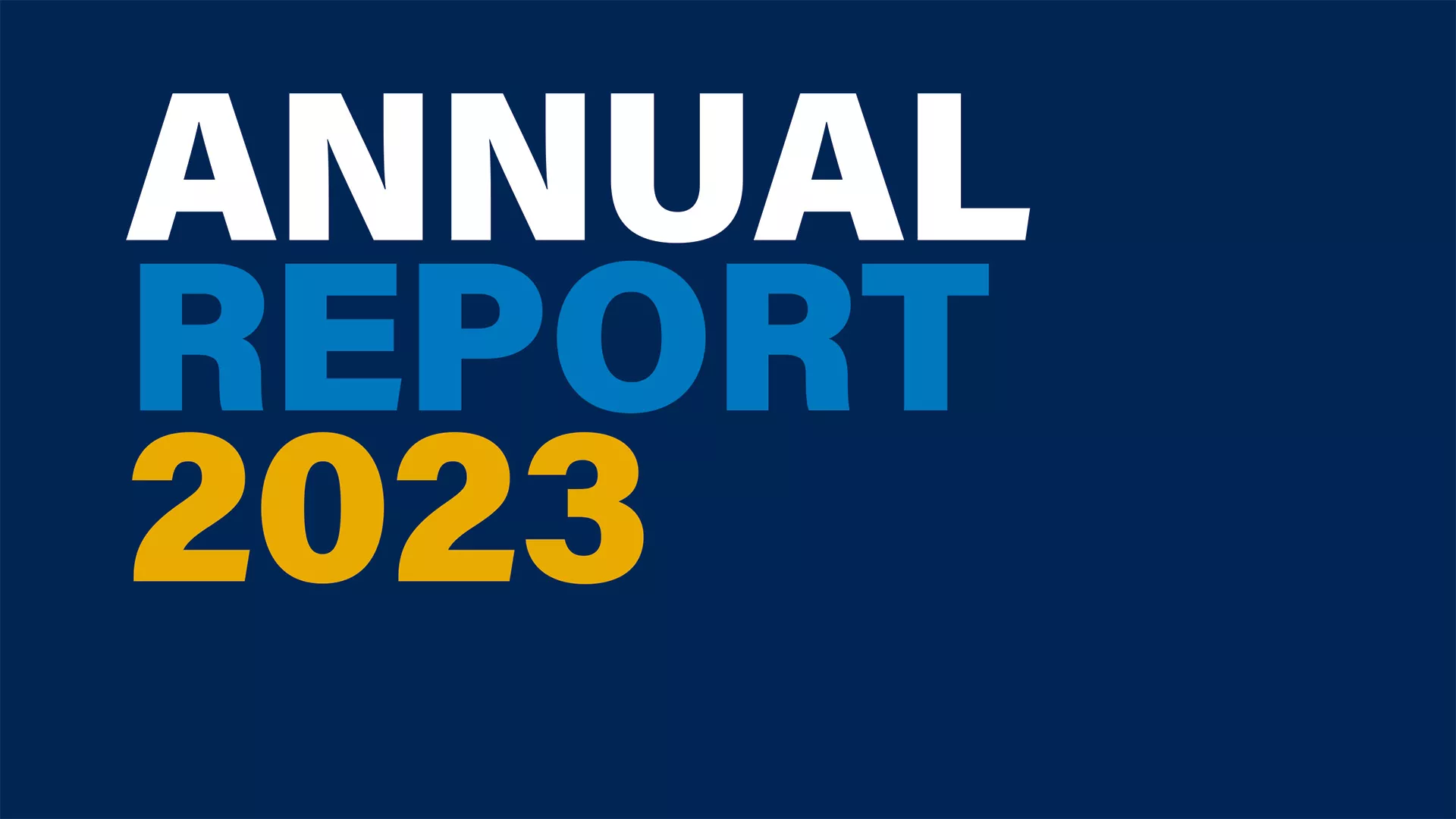
Annual Reports
- Annual Report and Accounts 2024
- Annual Report and Accounts 2023
- Annual Report and Accounts 2022
- Annual Report and Accounts 2021
- Annual Report and Accounts 2020
- Annual Report and Accounts 2019
- Annual Report and Accounts 2018
- Annual Report and Accounts 2017
- Annual Report and Accounts 2016
- Annual Report and Accounts 2015
- Annual Report and Accounts 2014
MAIB Ali Ka investigation report
“Today, the Marine Accident Investigation Branch (MAIB) has published its report into the serious incident in October 2022 when the Ali Ka chemical tanker collided with the Oikos Jetty on the tidal Thames. The vessel was under PLA pilotage at the time of the collision. Fortunately, no one was hurt and no environmental damage occurred as a result of the incident.
“Navigational safety is the primary responsibility for the PLA and, alongside the MAIB’s investigation, we immediately conducted our own internal investigation which was completed in late 2022. Our internal review identified a number of lessons, which we have already implemented, and these actions have been referenced in the MAIB’s report. We have fully supported the MAIB’s investigation throughout.
“The PLA accepts the MAIB’s four recommendations for us and, by the end of this month, we will have implemented the first three recommendations. The final MAIB recommendation relates to fatigue risk management, which raises issues which will need considering across the ports sector. This includes understanding and codifying the balance between the organisation’s responsibilities and an individual employee’s responsibilities in managing fatigue risk. We are currently reviewing our own existing fatigue management systems against this recommendation with relevant stakeholders."
Chief Executive Robin Mortimer and Chief Harbour Master James Stride
Related content

Location: London/Gravesend Remuneration: £28,971 per annum for a commitment of up to 24 days per...


Two more Trainee Pilots take to the Thames
The UK’s biggest port, Port of London Authority (PLA), is delighted to welcome two new recruits to our team of over 120 experienced pilots.
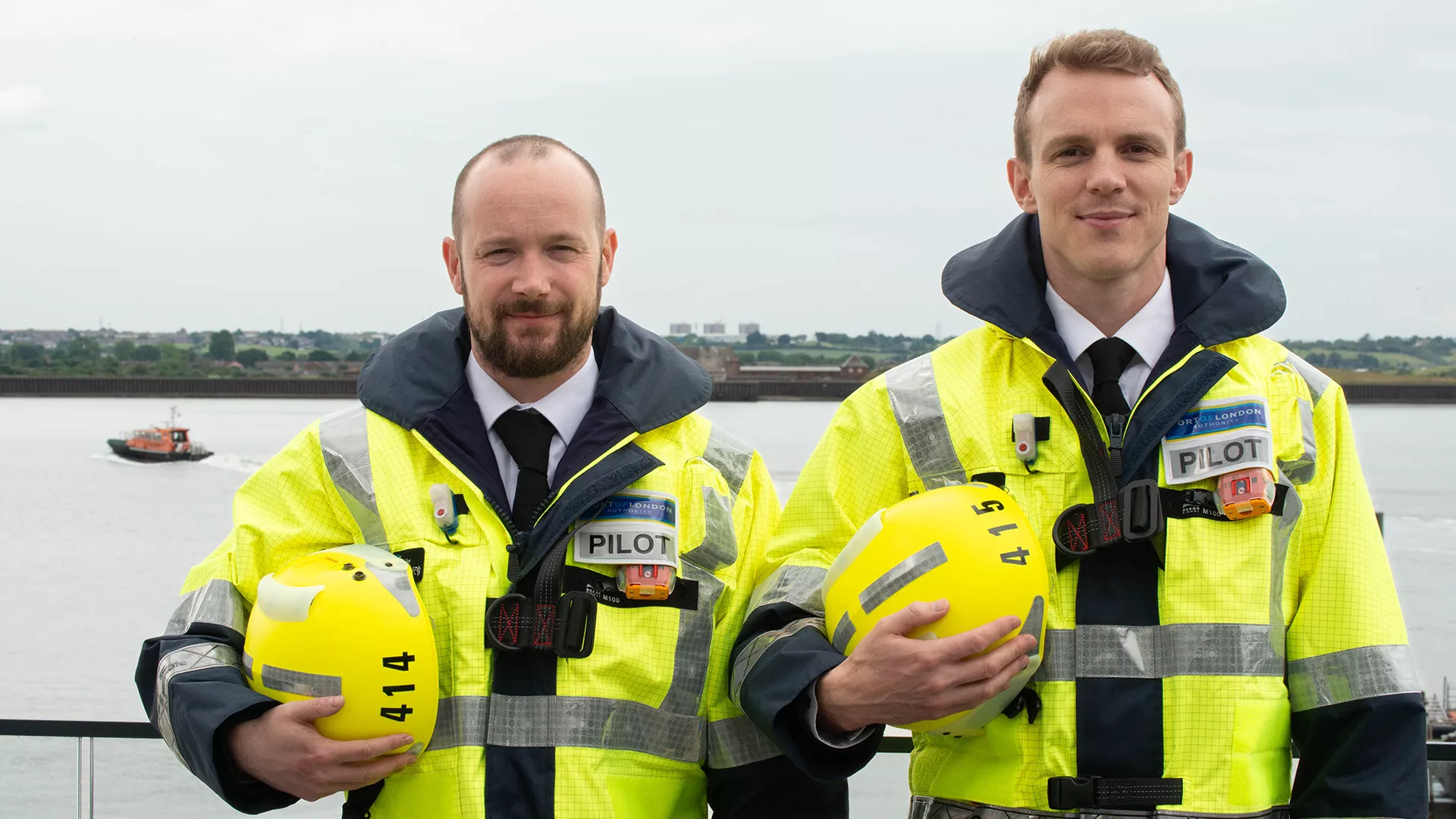
The completion of berth four at London Gateway is expected in the coming months, which is expected to contribute to a significant increase in trade on the river. In preparation for this and to meet the growing customer demand for pilotage services, the PLA has been continuing to invest in our team of Pilots.
Embarking on a comprehensive training programme which will equip them for the unique challenges of navigating the Thames, are:
- William Hatch (right), who began his seafaring career in 2014 with Holland America Line and has since gained valuable experience as Chief Officer on worldwide itineraries with Seabourn Cruises. During this time, he developed a strong interest in channel pilotage and ship handling. Driven by a deep family connection to the PLA and its pilotage history, he is looking forward to contributing to the safe navigation of vessels through the Thames.
- Johnnie Cowie (left) started his career at sea with Maersk, sailing on tankers and container ships worldwide, working his way up to 2nd Officer on their tanker fleet. He then moved to work on an offshore supply vessel as 2nd Officer rising to Chief Officer with SBS Marine, where he worked on the East coast of India and in the North Seak, before moving to Gulf Offshore as Chief Officer and Master. His shore-based career started in 2019 when he took up a role as Deputy Harbour Master and Pilot at the ports of Ayr and Troon with ABP on the West Coast of Scotland. Continuing work in the Ports and Harbours sector he moved to the East Coast of Scotland as Marine Manager in Leith, then Harbour Master of Forth and Tay with Forth Ports. He is now looking forward to returning to Pilotage and joining the PLA.
Dave Newbury, PLA Marine Pilotage Manager said:
“We are thrilled to have William and Johnnie join our Pilotage team.
“Increasing our talent pool will allow us to sustain a resilient and quality service for our customers and increase the volume of freight transported to this country by river.”
In 2023, the PLA achieved a 99.6 per cent pilotage service level for customers, during which our pilots guided 13,707 vessels along the river and estuary.
Related content

Location: London/Gravesend Remuneration: £28,971 per annum for a commitment of up to 24 days per...


Thames Environment Fund opens for applications
£50,000 available for projects that foster environmental improvements on the tidal river
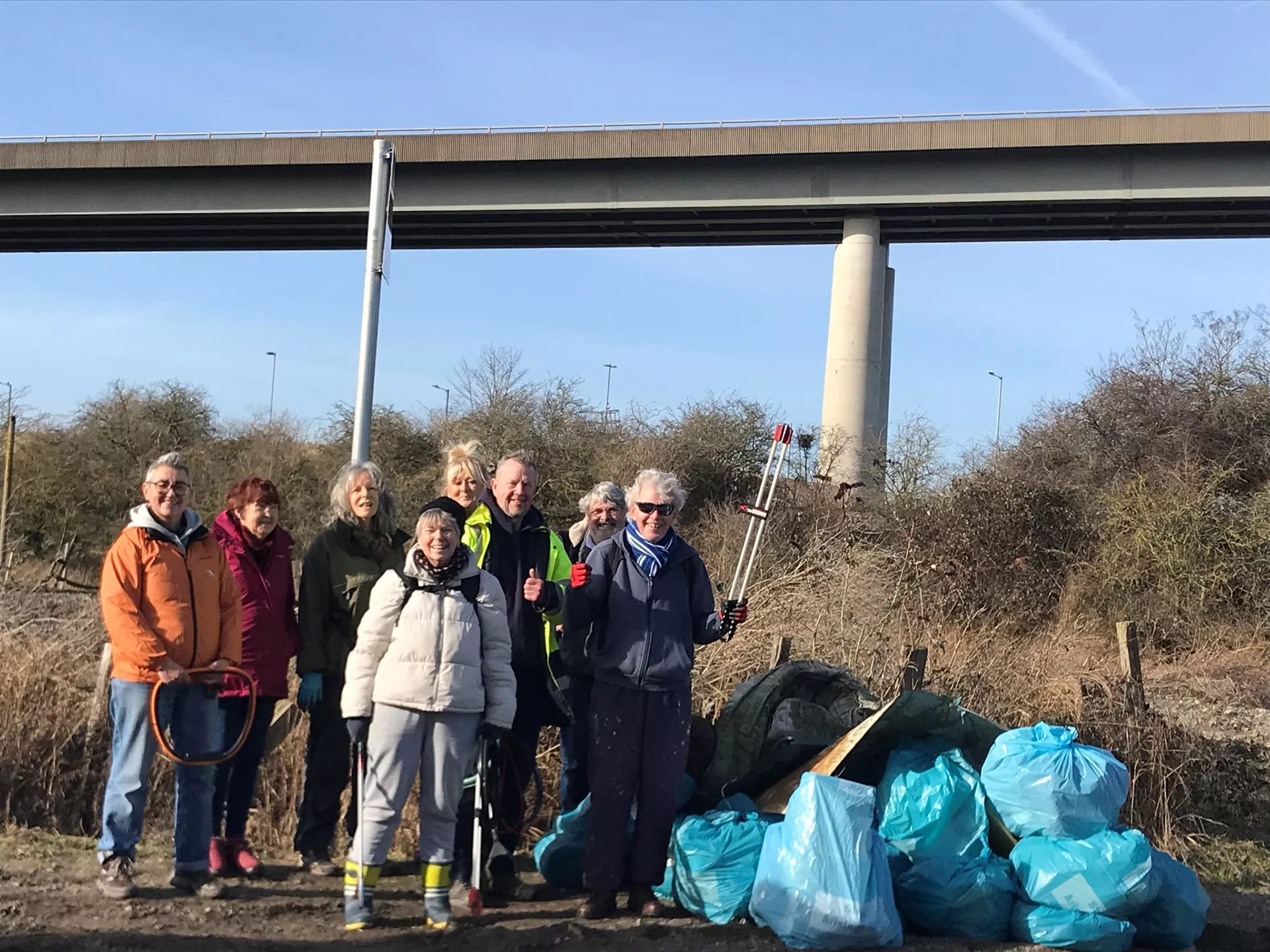
Marking London Climate Action Week (22 June to 30 June), the Port of London Authority (PLA) has opened this year’s Thames Environment Fund.
As a trust port, the PLA’s role is to protect and improve the tidal Thames for all, handing it on in a better condition to future generations. To deliver on the environmental aims of the PLA’s strategy, Thames Vision 2050, this year’s funding aims to attract a wider variety of applicants, including from schools, charities and sports clubs with an interest in protecting the river.
Grace Rawnsley, Director of Sustainability at the PLA said: “We are excited to launch our Thames Environment Fund this year. We’re again offering £50,000 to fund a range of projects that foster environmental improvements on the tidal Thames. We welcome any applicants who share our passion and vision for the future of the natural Thames and its wildlife.”
In the past three years, the PLA has underwritten 14 projects, thanks to the Thames Environment Fund. Last year’s funding supported clean up events, repaired a pontoon and promoted the research on filtration of microplastics. Examples include: Greenwich Yacht Club’s purchase and testing of electric outboards, Medway Swale Estuary Partnership’s and Fulham Reach Boat Club’s litter picks.
Applications are open to any project ideas that will be of environmental benefit to the tidal Thames. The application period opens today, 24 June, and closes on Friday 30 August 2024 at 5pm. Projects may ask for up to £15,000.
Click here to download the application. (docx)
Second round project funding
Greenwich Yacht Club used its £14,355.45 grant for the purchase, installation and testing of 3 electric outboard boat motors, as well as an outreach initiative to educate members and the community about the benefits of electric outboards.
Fulham Reach Boat Club used its £2,000 grant to plan and engage participants in regular litter-picking sessions and use weekly water quality testing to educate participants on river pollution and collect a reliable dataset.
£2,500 allowed South Dock Marina Berth Holders Association to extend the flora introduction in the Greenland Dock Lock Area with the addition of 8, 2-meter square floating planter sections to adjoin the existing line of 5, creating a reed bed of sufficient density to be self-sustaining. An ‘H’ layout will incorporate sheltered areas for bird life.
UCL's £12,500 grant enabled it to plan research filtration techniques to collect microplastics from the River Thames and develop a series of three prototypes to quantify their effectiveness. A report will be published outlining the project deliverables and the next steps for future research.
London Wildlife Trust received a £12,130 grant for the purchase of essential PPE, tools, equipment, and materials for the Isleworth Ait volunteering sessions. Access improvements to the landing allowed volunteers to undertake projects on the island: Osiers were harvested, and mostly replanted, trees obstructing the footpath were removed, and sycamore branches overhanging the summer snowflake and marsh marigolds (starting to flower in March) were cut back.
Medway Swale Estuary Partnership’s £2,250 grant allowed it to undertake monthly litter clean-ups on sites across the Thames and Medway Swale Estuaries. To date 63 volunteers have attended equating to 126 volunteer hours and 127 bags of litter have been removed from the foreshore weighing 874kg.
Tidey’s grant of £2,500 helped them create a project informing groups of students about river pollution and promoting litter-picking, caring for river wildlife, and protecting the river. The project also involved litter picking events with students on the foreshore, with data feeding into Thames21’s water pollution database and the PLA’s Cleaning the Thames.
Related content

Location: London/Gravesend Remuneration: £28,971 per annum for a commitment of up to 24 days per...


John Dillon-Leetch receives 2024 Alexander Dalrymple Award
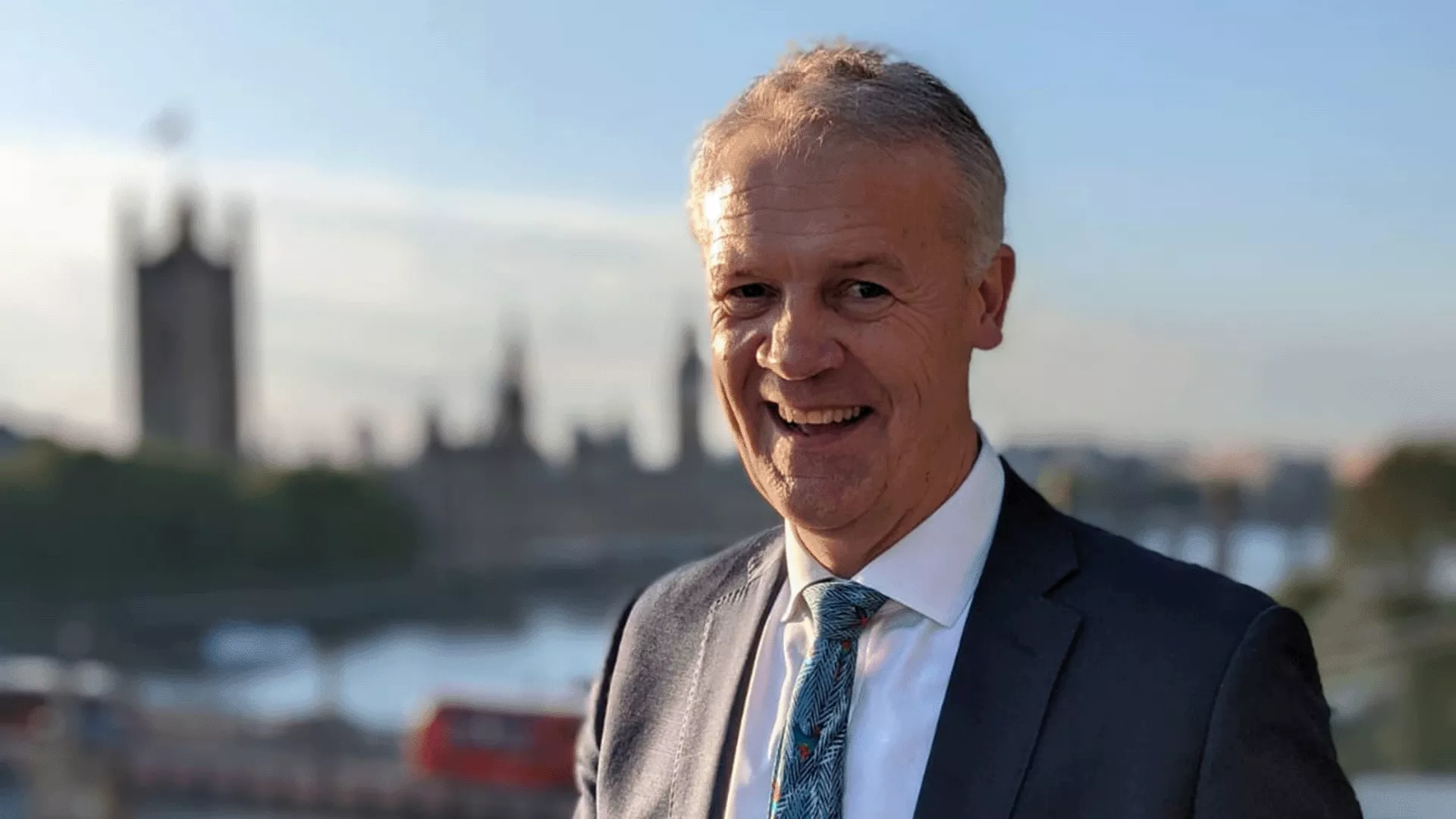
Port of London Authority Port Hydrographer recognised for his contributions to hydrography
The UK Hydrographic Office (UKHO) yesterday awarded John Dillon-Leetch, Port Hydrographer at the Port of London Authority (PLA), with the prestigious Alexander Dalrymple Award for 2024. The accolade recognises his significant contributions to hydrography.
John was presented the award on World Hydrography Day during a ceremony organised by UKHO at the International Maritime Organization’s headquarters in London. The event was hosted by the UK’s National Hydrographer, Rear Admiral Angus Essenhigh OBE, and was attended by representatives from the maritime sector.
The Alexander Dalrymple Award committee recognised John for his crucial role in advancing the PLA’s commitment to navigational safety, conservation, and sustainability. During his time as Port Hydrographer, John has enabled the PLA to develop one of the most proficient hydrographic departments in the UK.
John has also significantly contributed to the UK’s wider hydrographic community, playing a key role in the relaunch of University College London’s Master’s Programme in Hydrographic Surveying, which is supported by the PLA. This program, accredited by FIG/IHO/ICA as a Category A course, is pivotal in increasing the number of trained surveyors dedicated to the essential task of seabed mapping.
Commenting on the award, Rear Admiral Angus Essenhigh, UK National Hydrographer, UKHO, said: “We take great pride in presenting this award to John for his significant and lasting contributions to hydrography. We recognise his outstanding impact on the Port of London Authority through his leadership as Port Hydrographer and his pivotal role in advancing hydrographic education. He joins a distinguished lineage of the world’s most influential hydrographers, and it is an honour to acknowledge his remarkable achievements.”
John added: “I am delighted and honoured to be the recipient of this prestigious award. Steve Richie, who was the first recipient of the Alexander Dalrymple Award, wrote a book entitled ‘No Day Too Long - An Hydrographer's Tale’ which first drew me to the profession. Thirty years later, to be counted amongst its alumni is the highlight of my career.
“I see the award as recognition of the Port of London Authority's consistent support and the value it places in the positive impact that hydrography brings to improving safety, efficiency and sustainability on the Thames, as well as the wider ports and shipping industry.”
Under John’s guidance, the PLA has become one of the first ports to sign a Strategic MoU with the UKHO. This partnership has unlocked significant innovations and efficiencies for both the UKHO and the PLA, marking a new era of collaboration and progress in hydrographic practices.
John continued: “Our relationship with the UKHO has been strengthened through our strategic Memorandum of Understanding, which focusses on the collaborative development, production, and delivery of digital charting products, processes, and data services. This will enable significant improvement in safety of navigation in our waters for all mariners.”
The UK Hydrographic Office has annually presented the Alexander Dalrymple Award since 2006. The accolade is named in honour of the first Hydrographer of the British Admiralty and recognises outstanding contributions to the field of hydrography. The UKHO's Executive Committee selects recipients based on their commitment to advancing hydrography, cartography, and navigation standards globally.
Photo: Sarah Dillon-Leetch
Related content

Location: London/Gravesend Remuneration: £28,971 per annum for a commitment of up to 24 days per...


Discover
